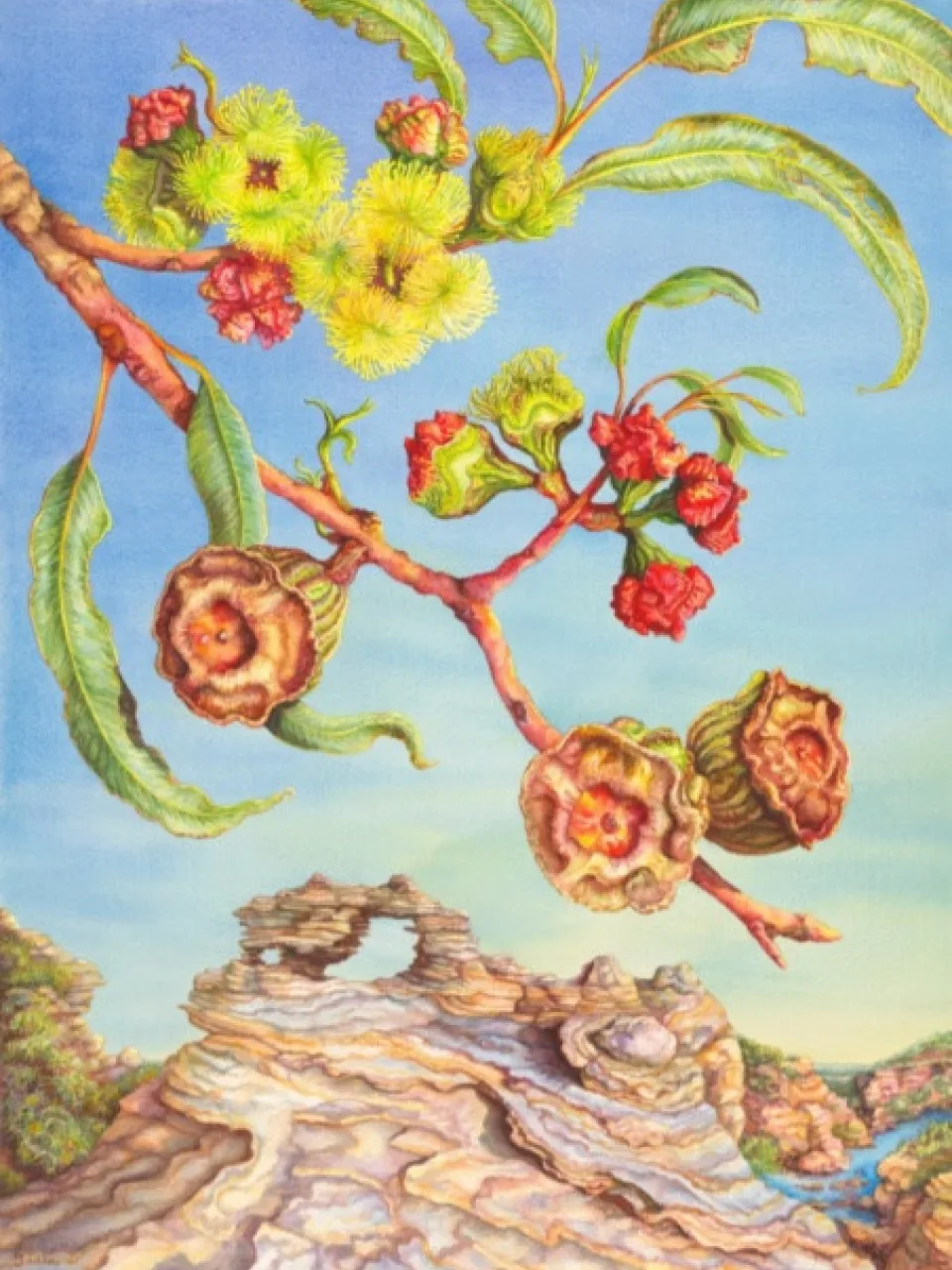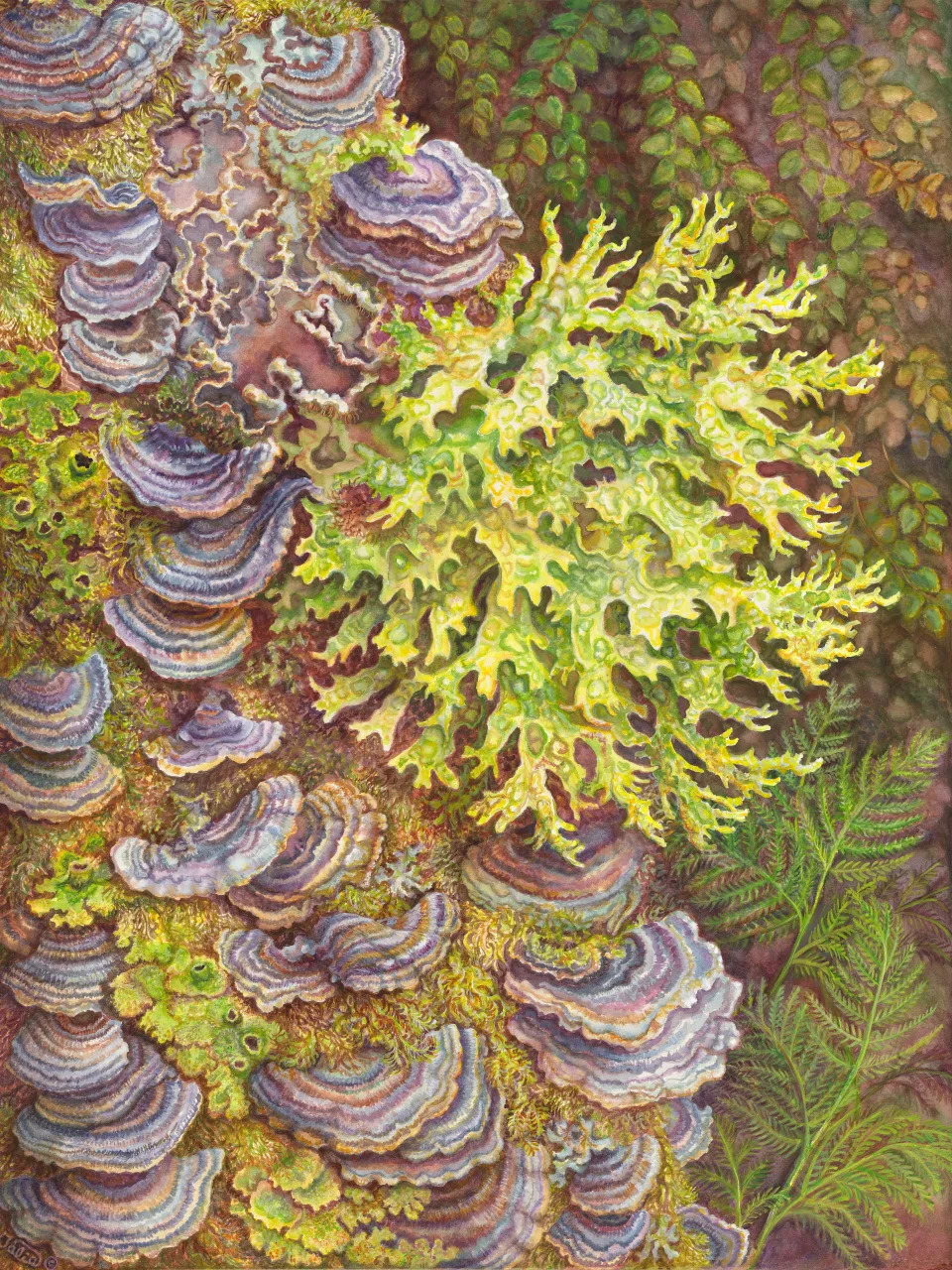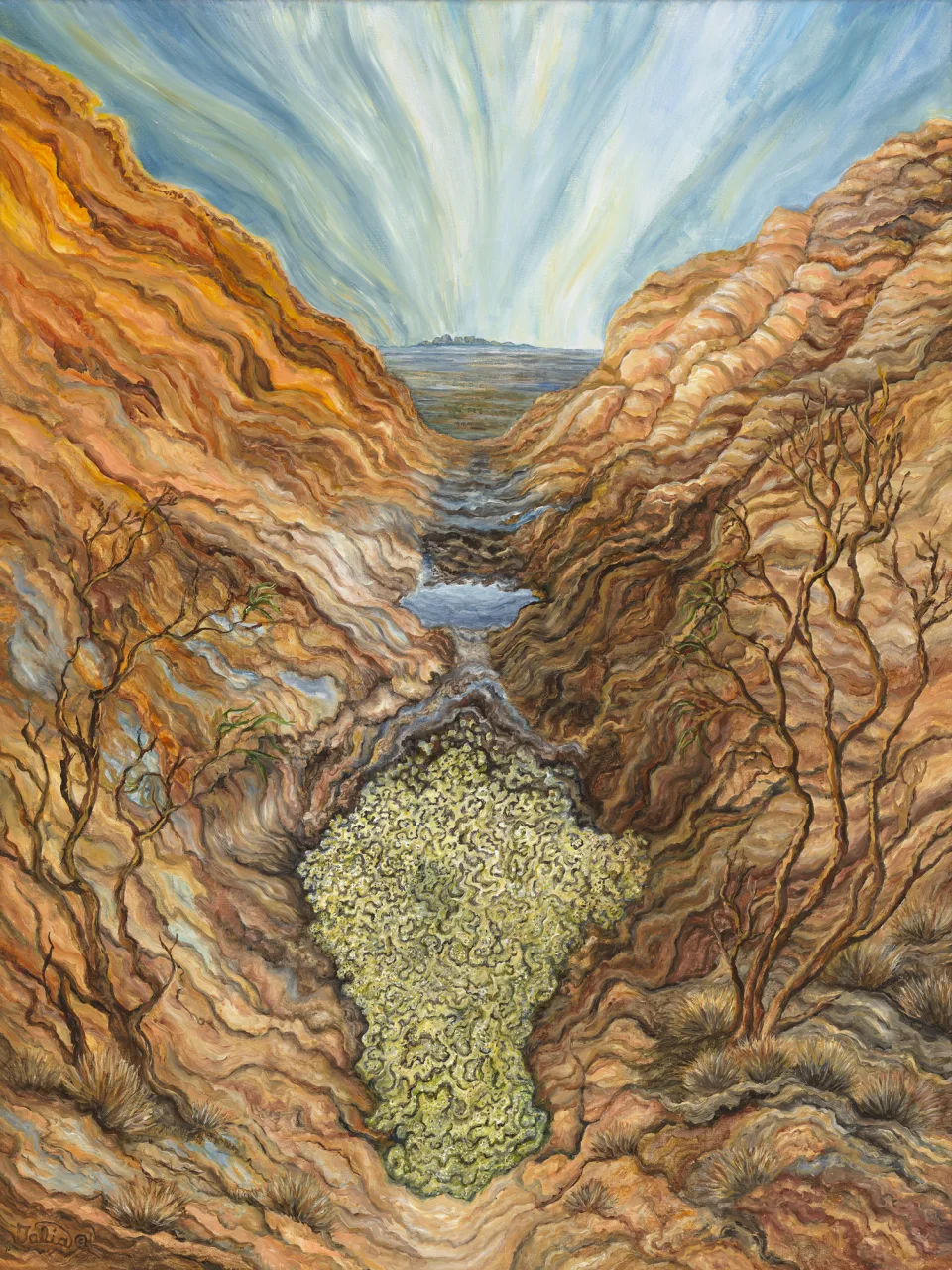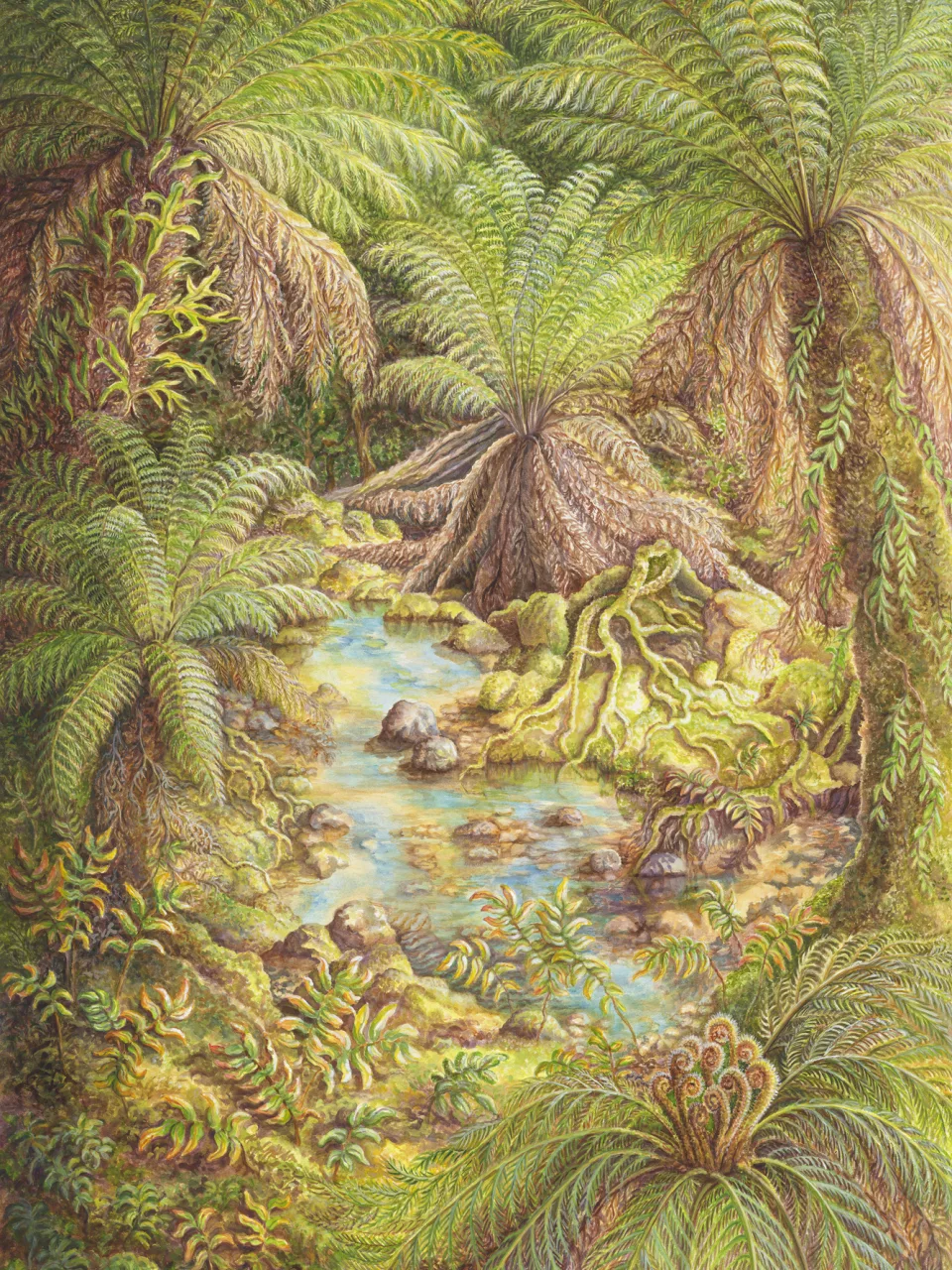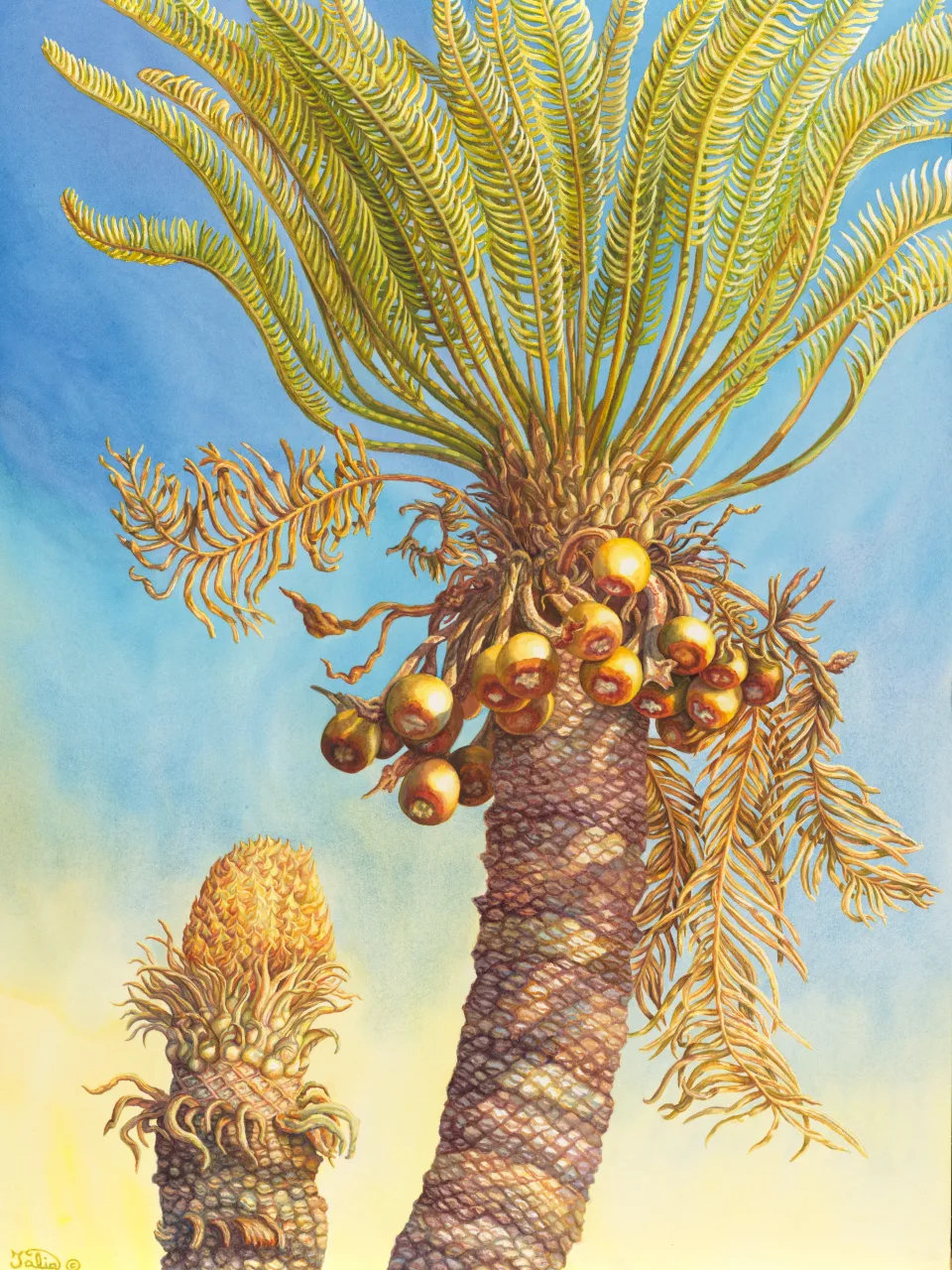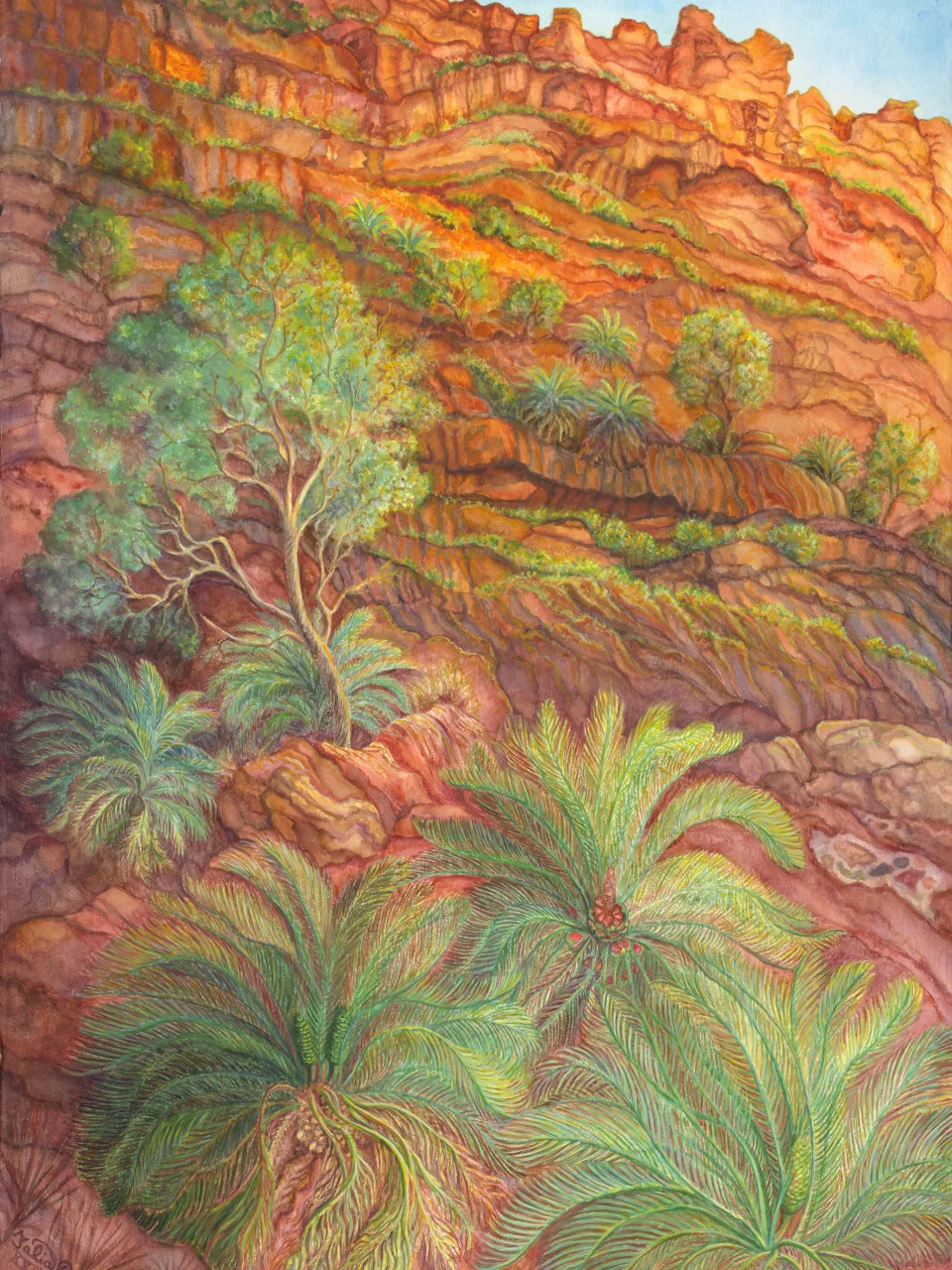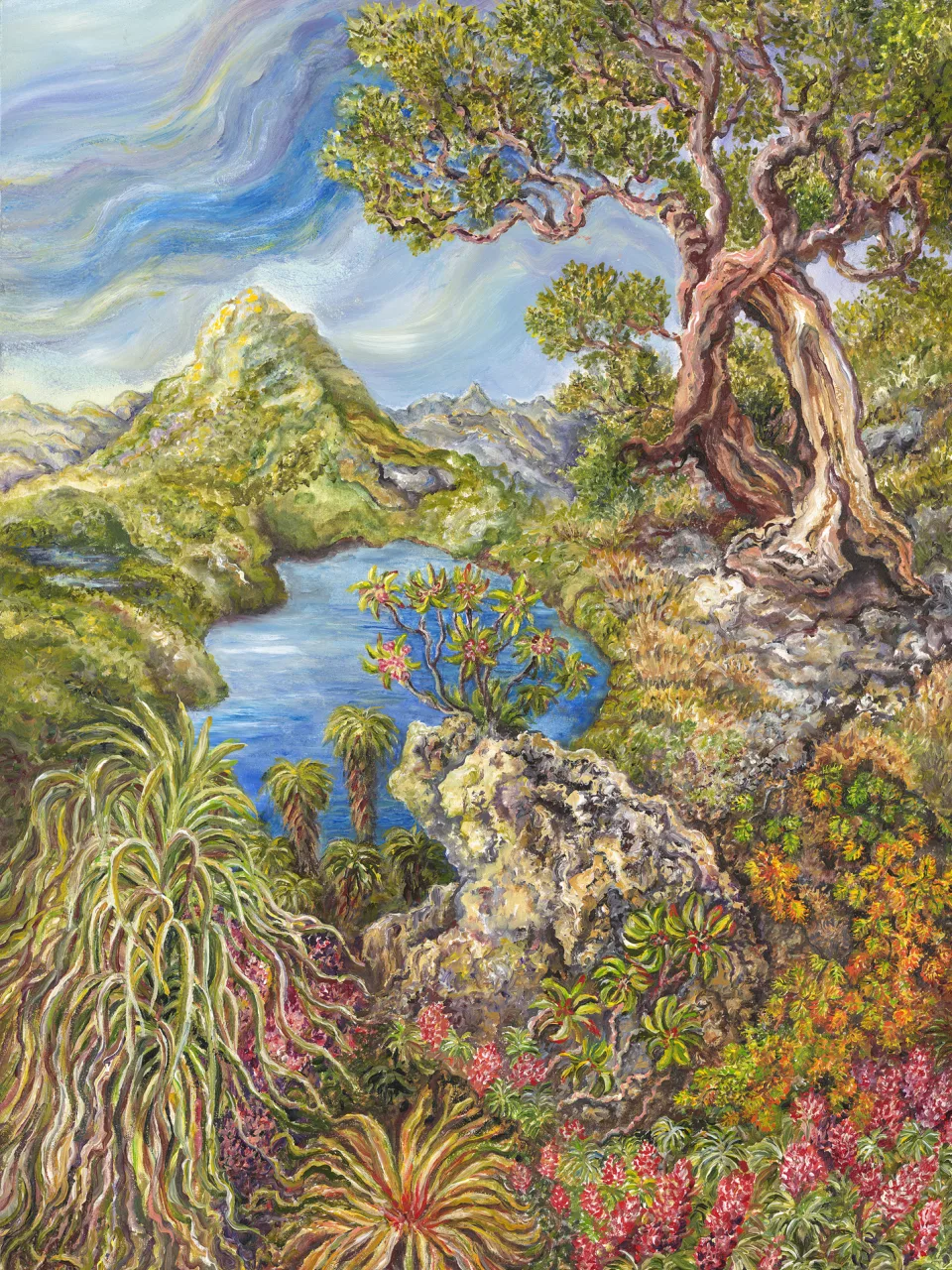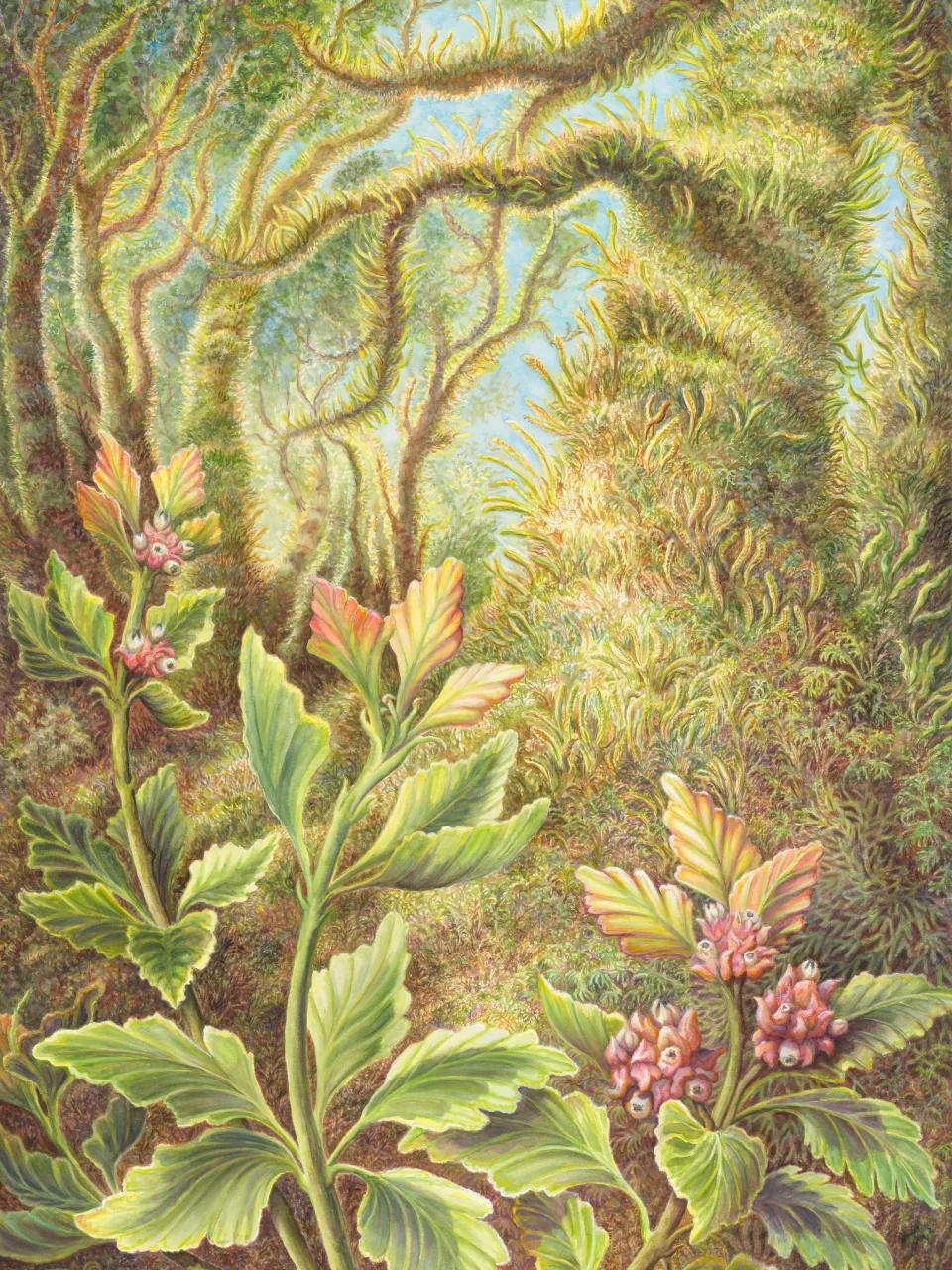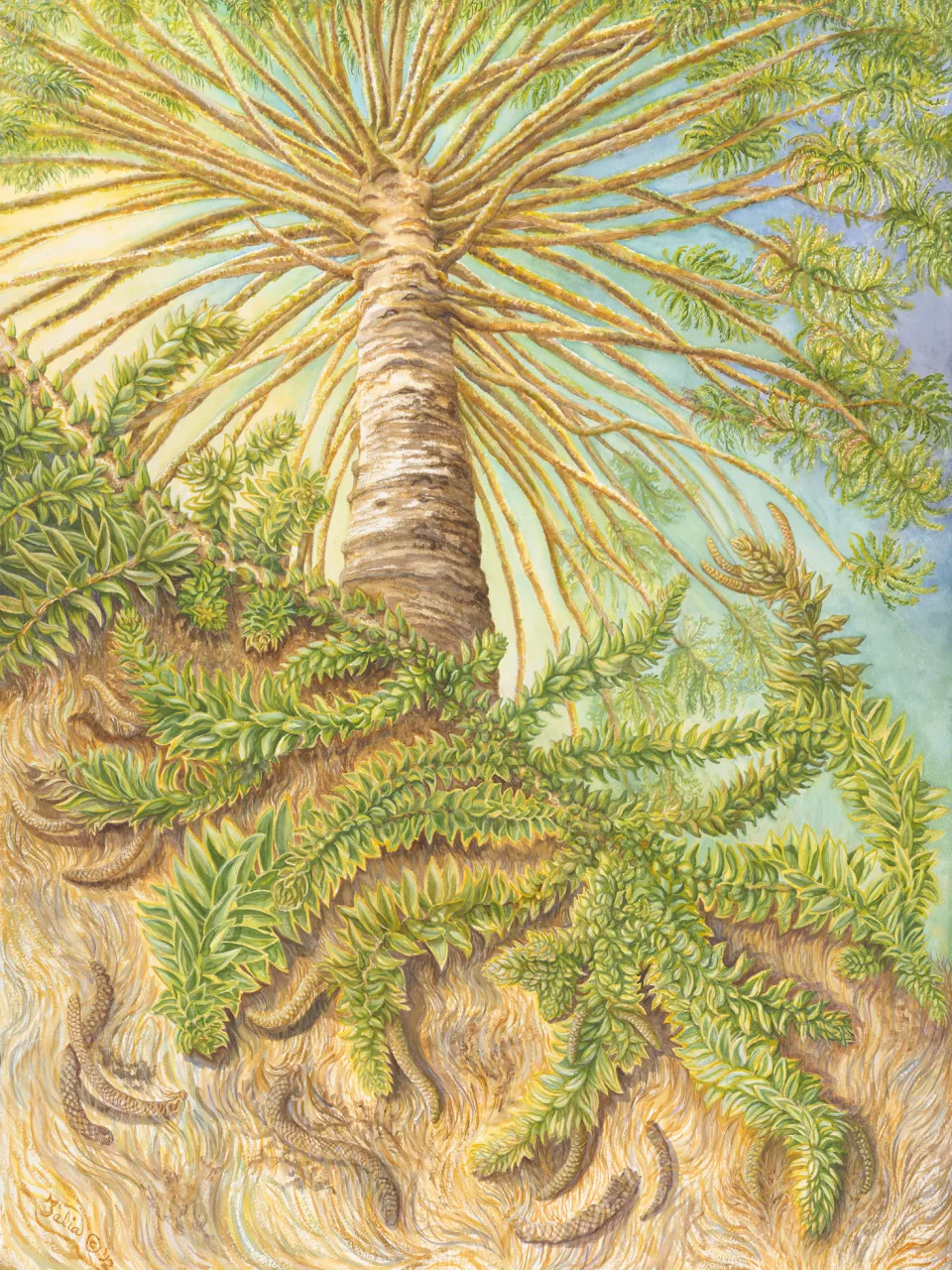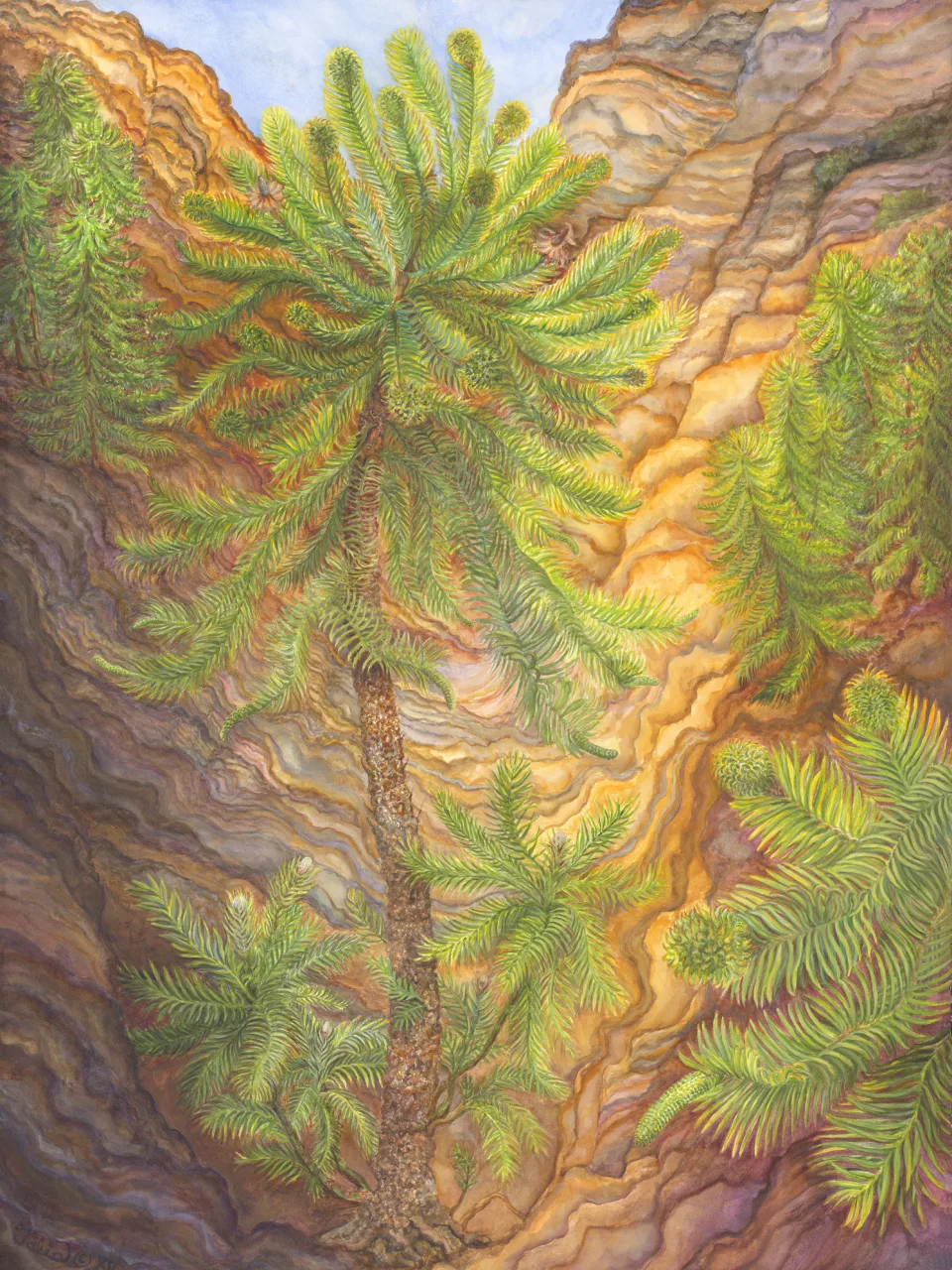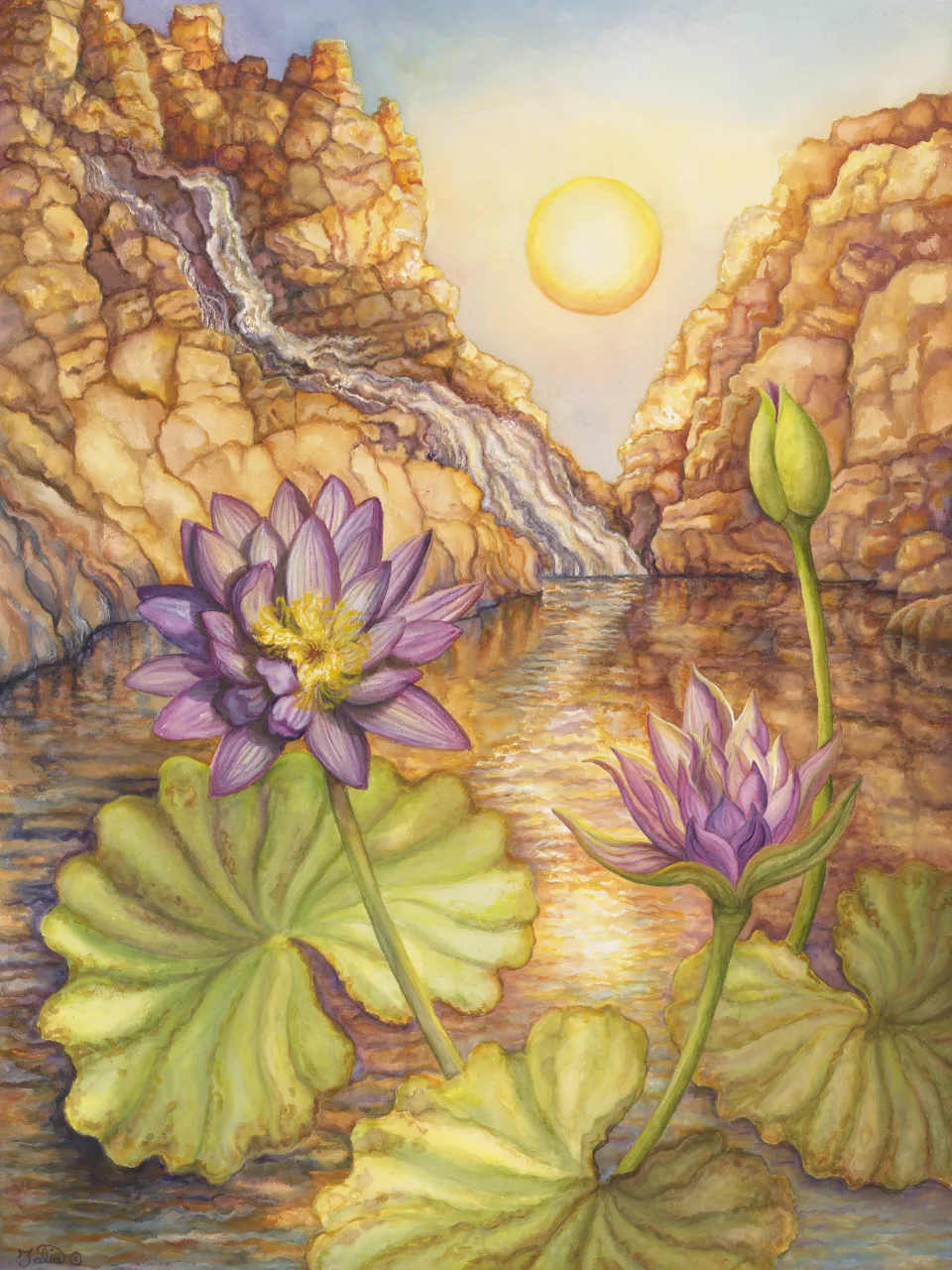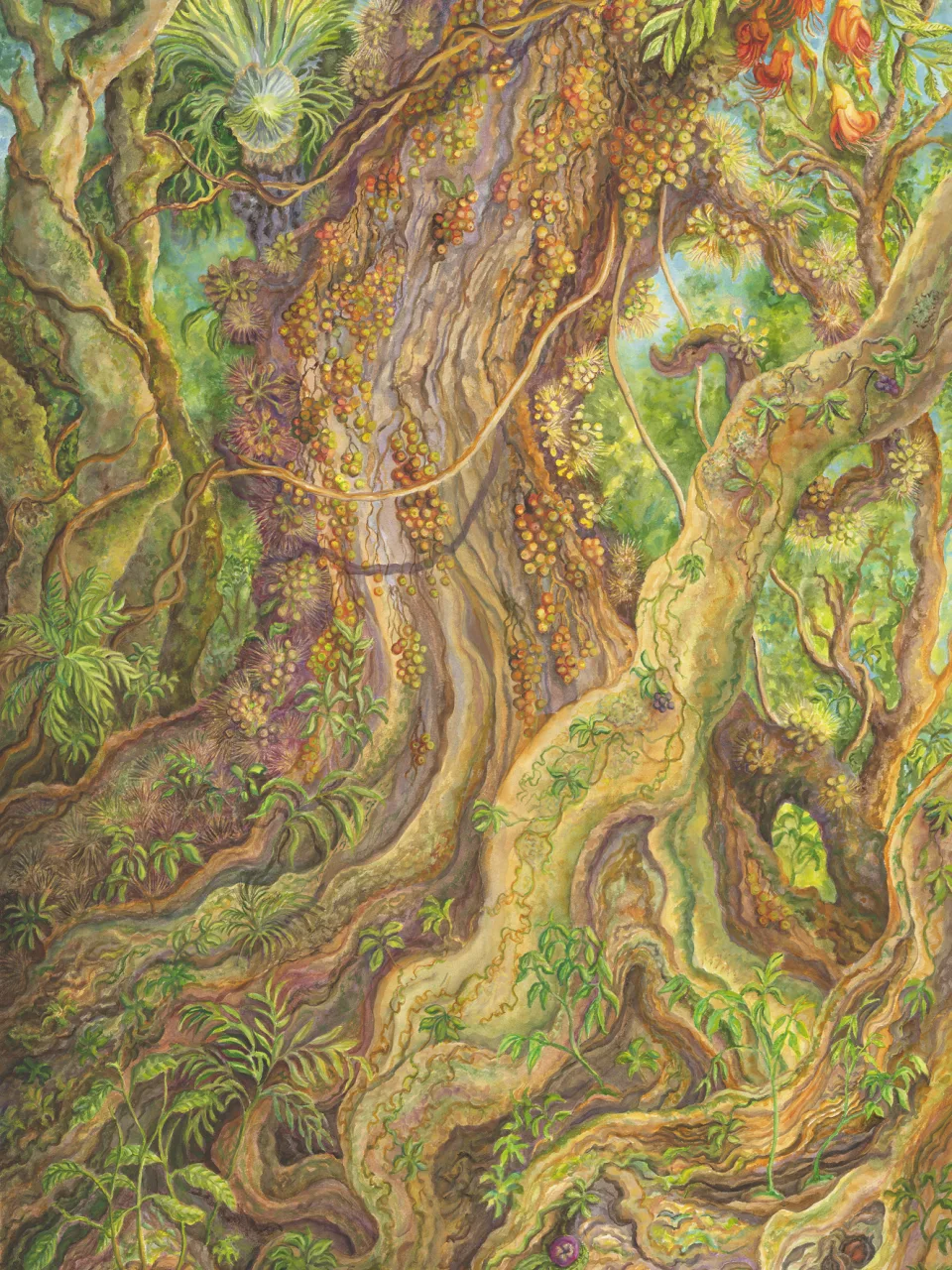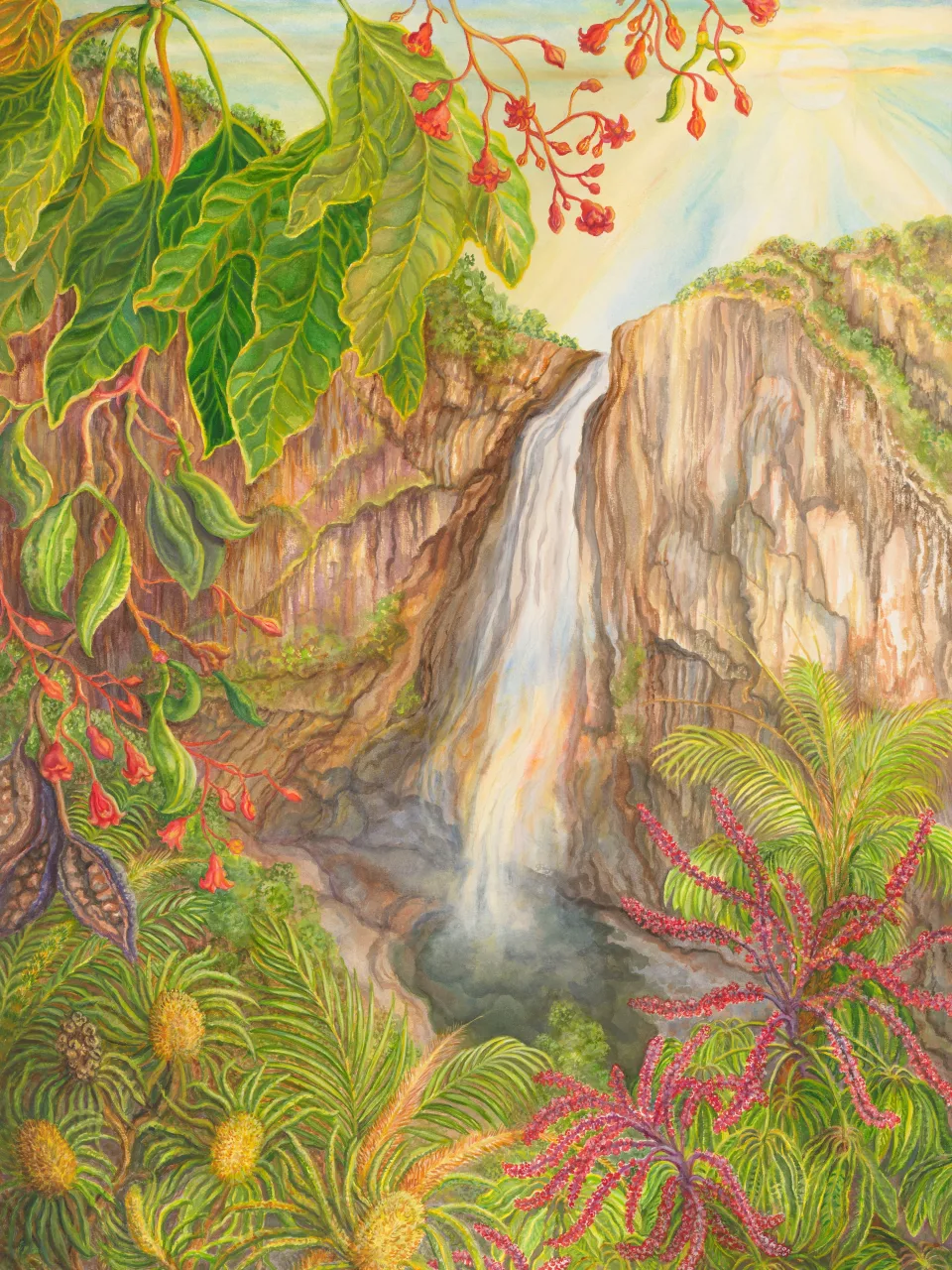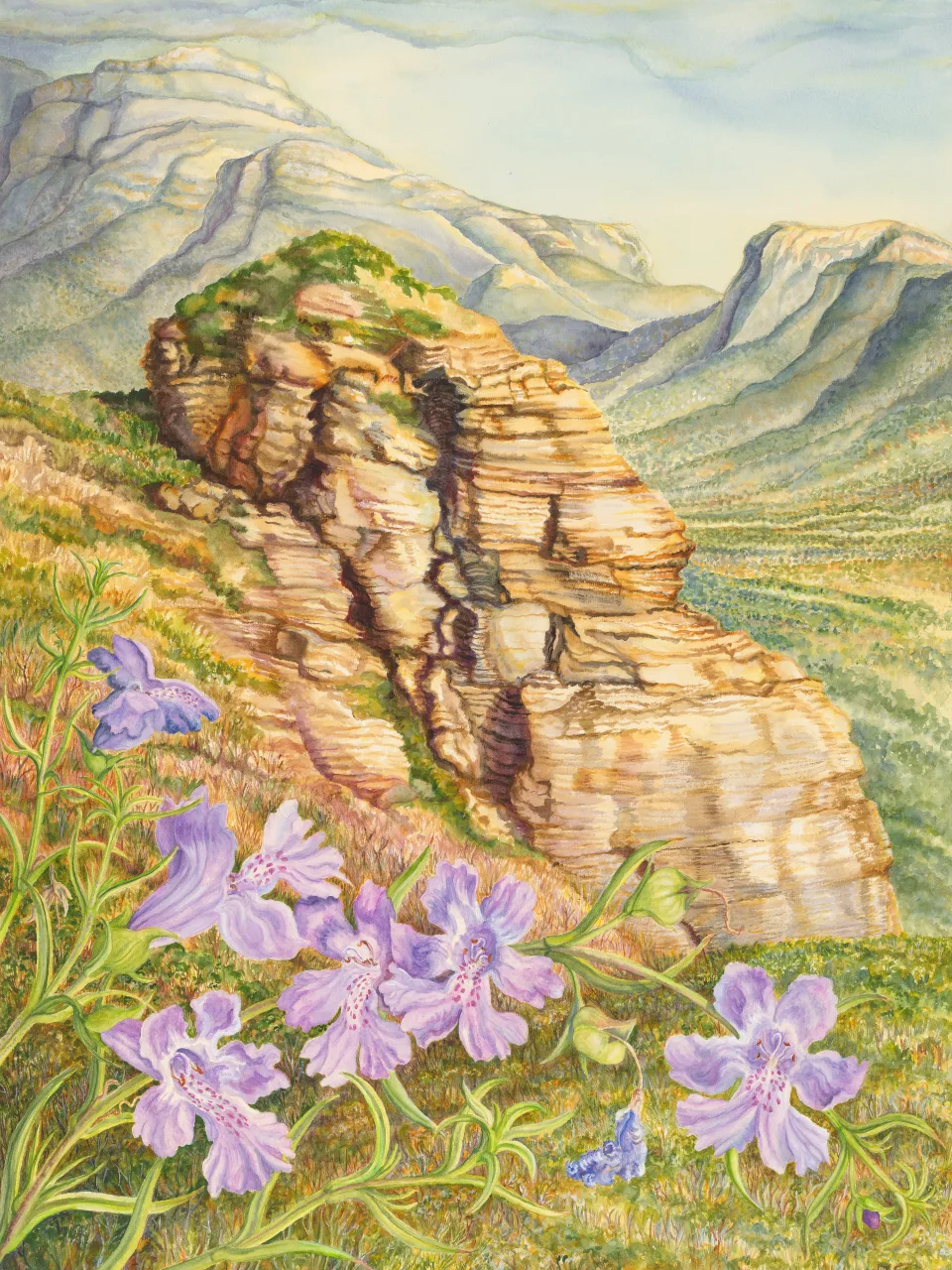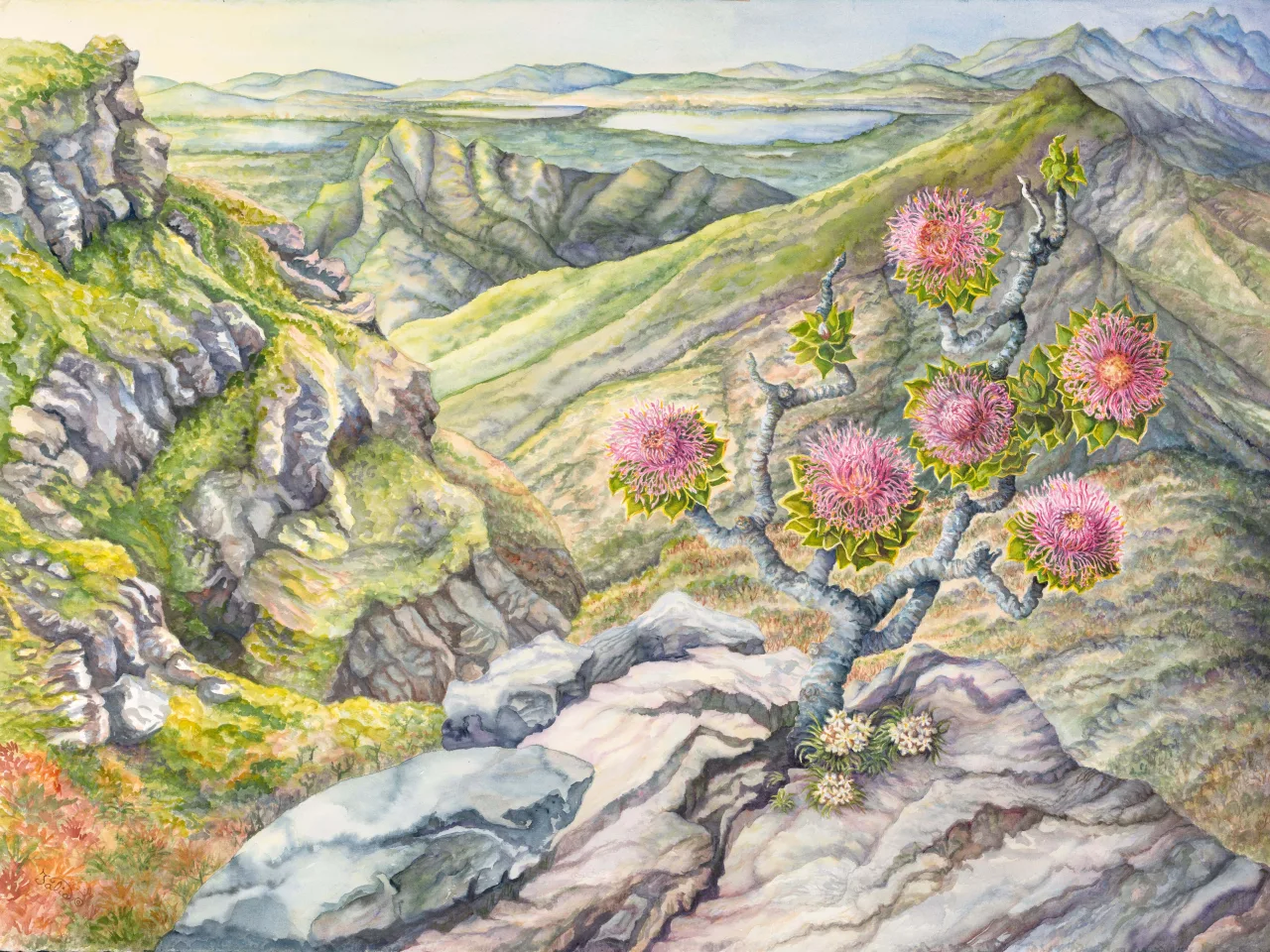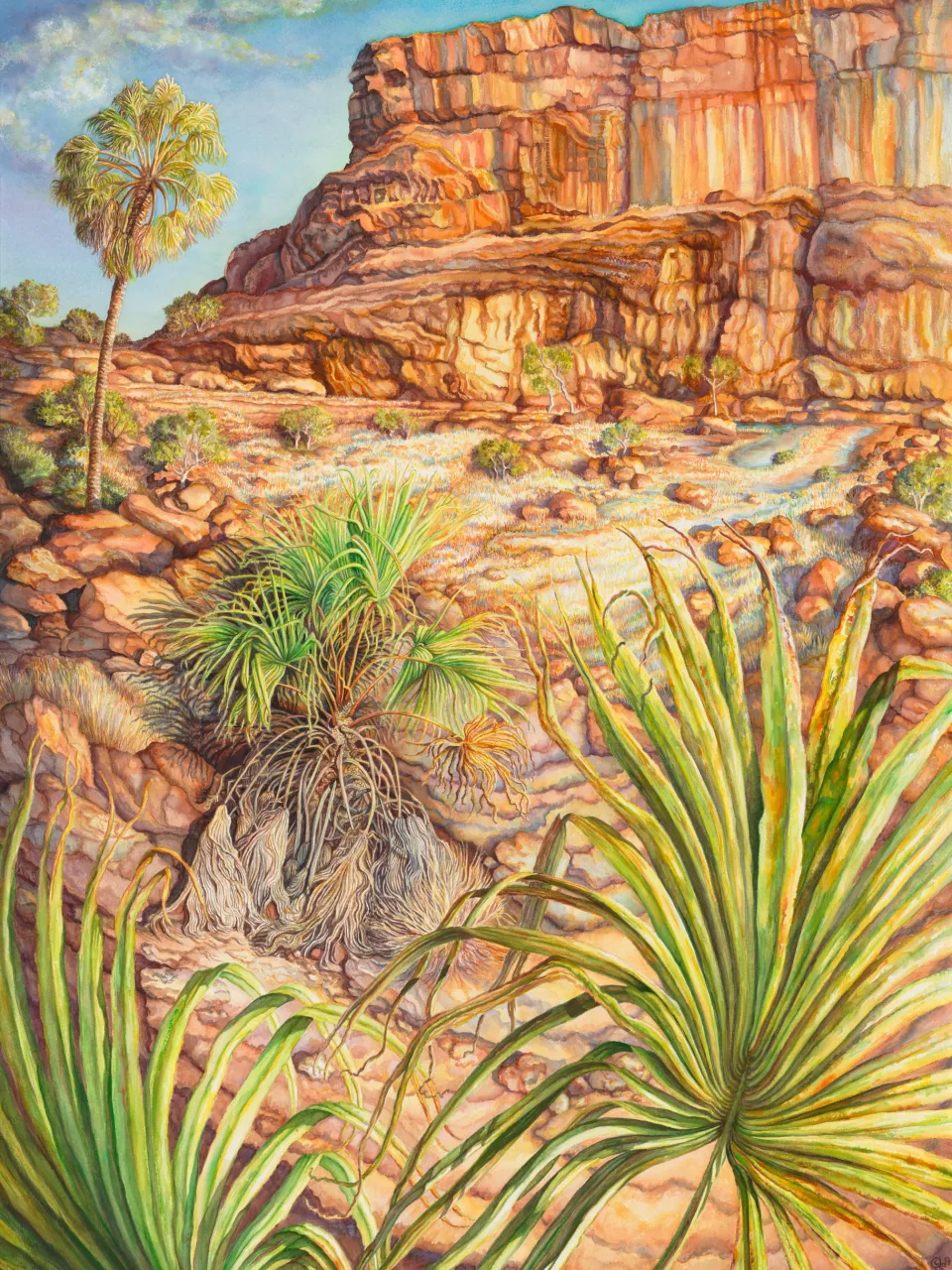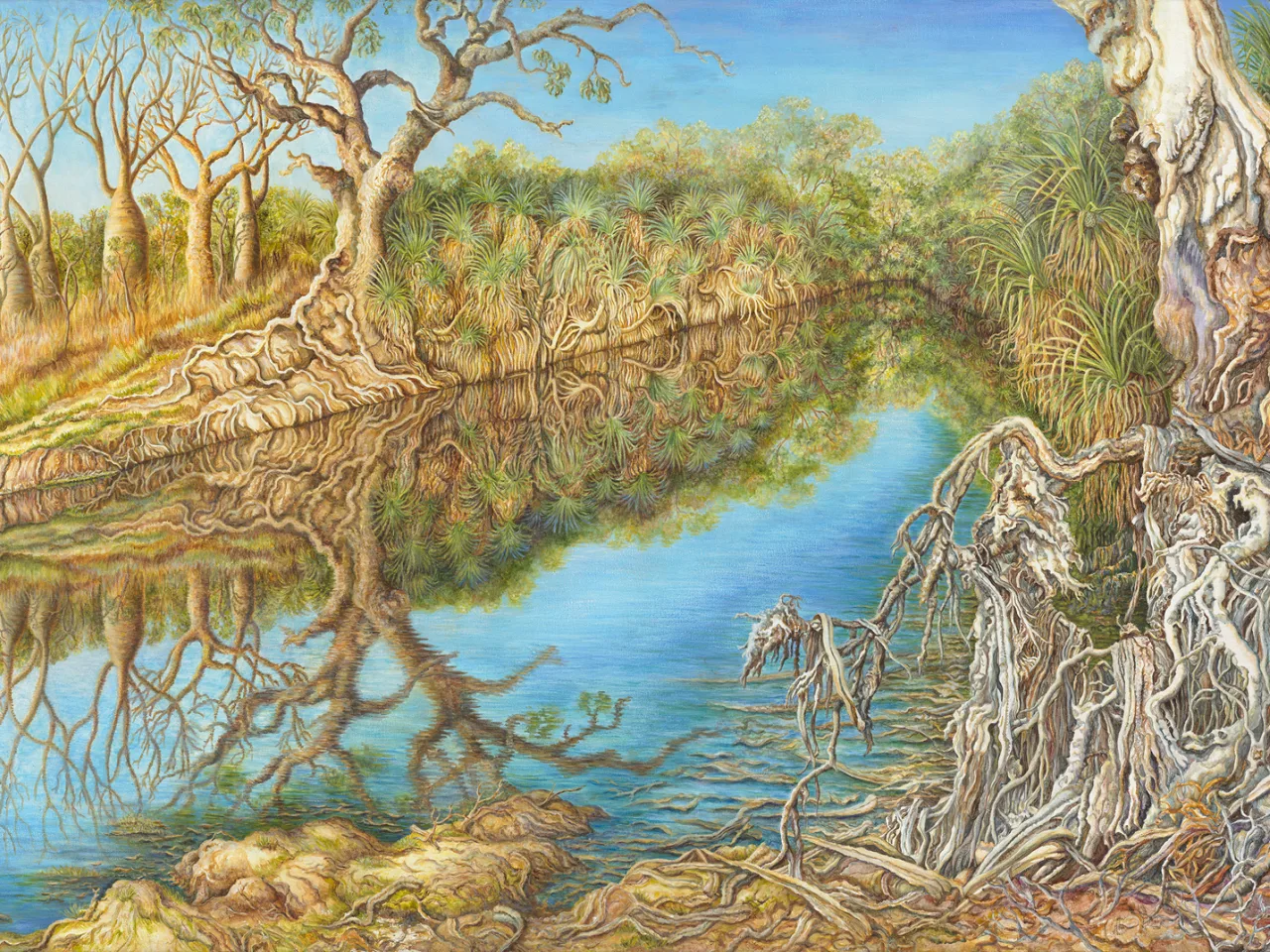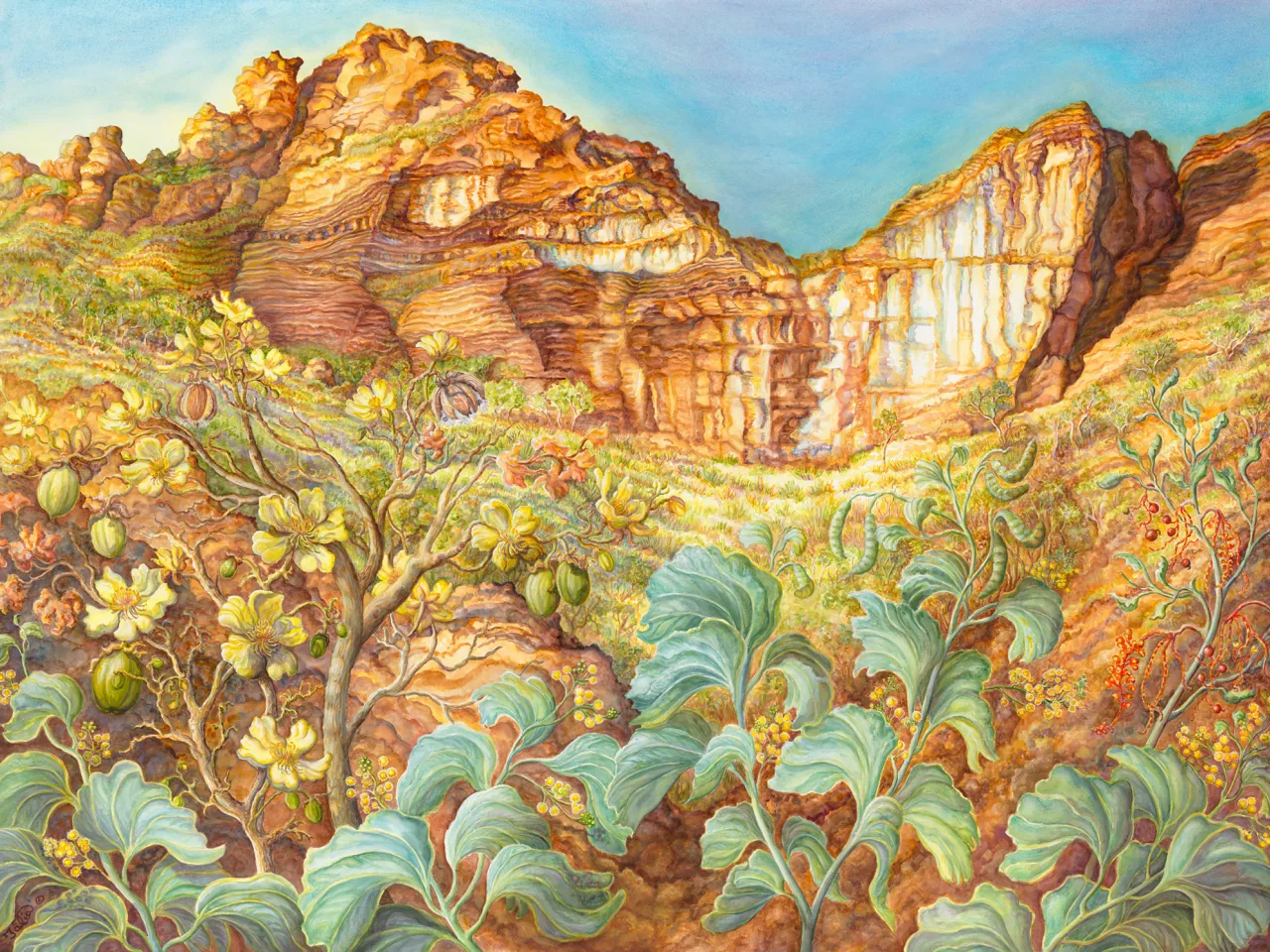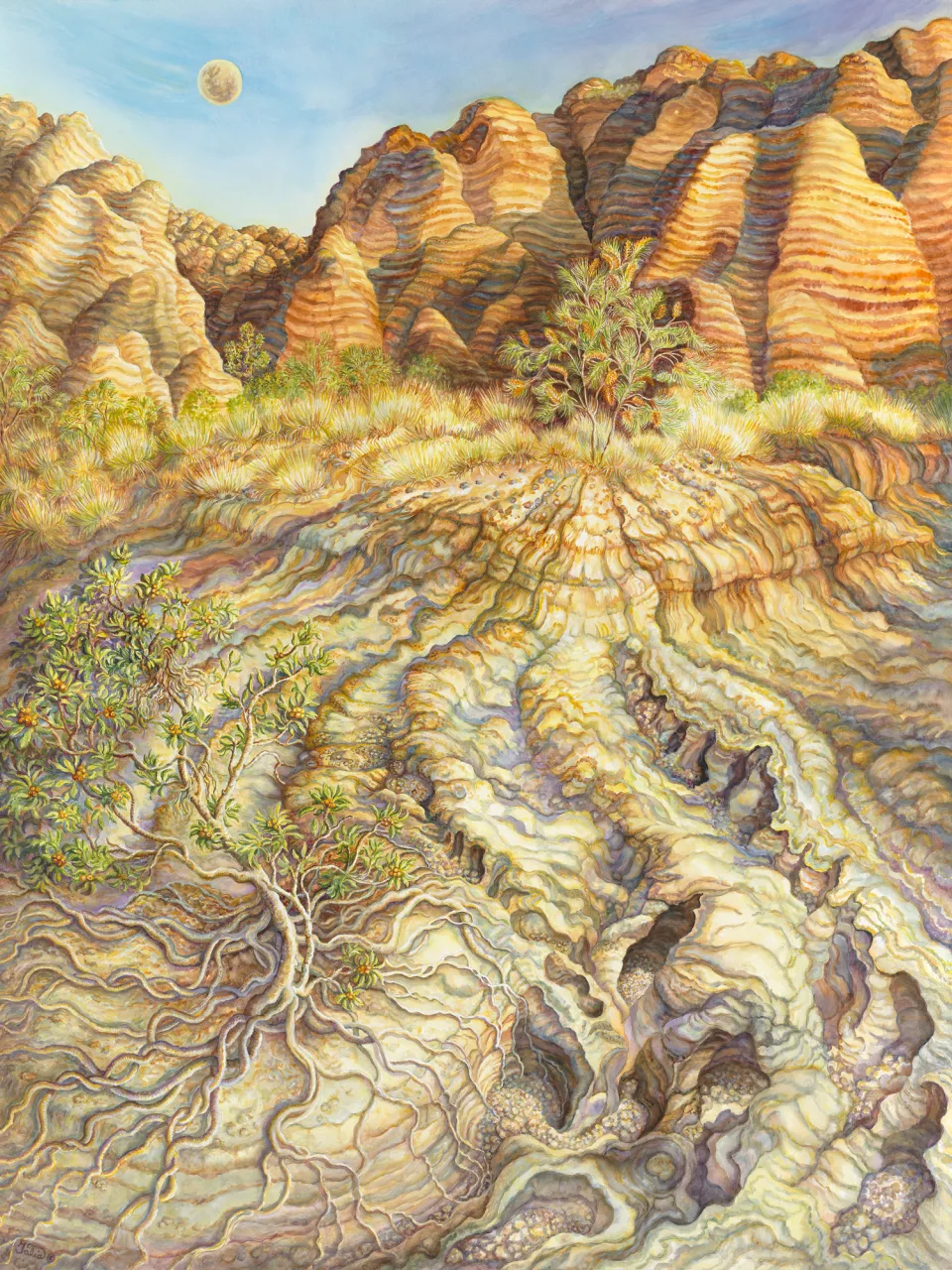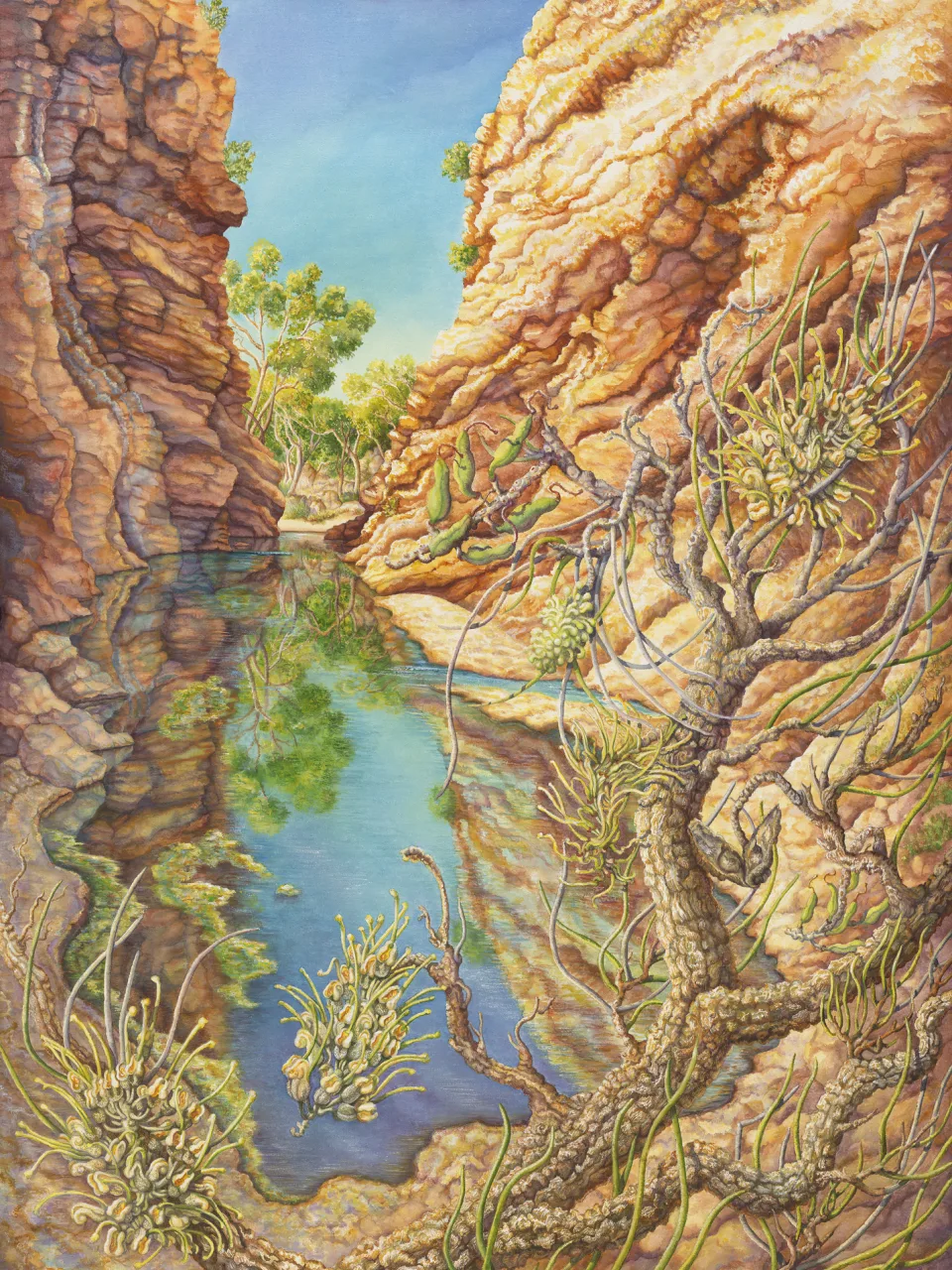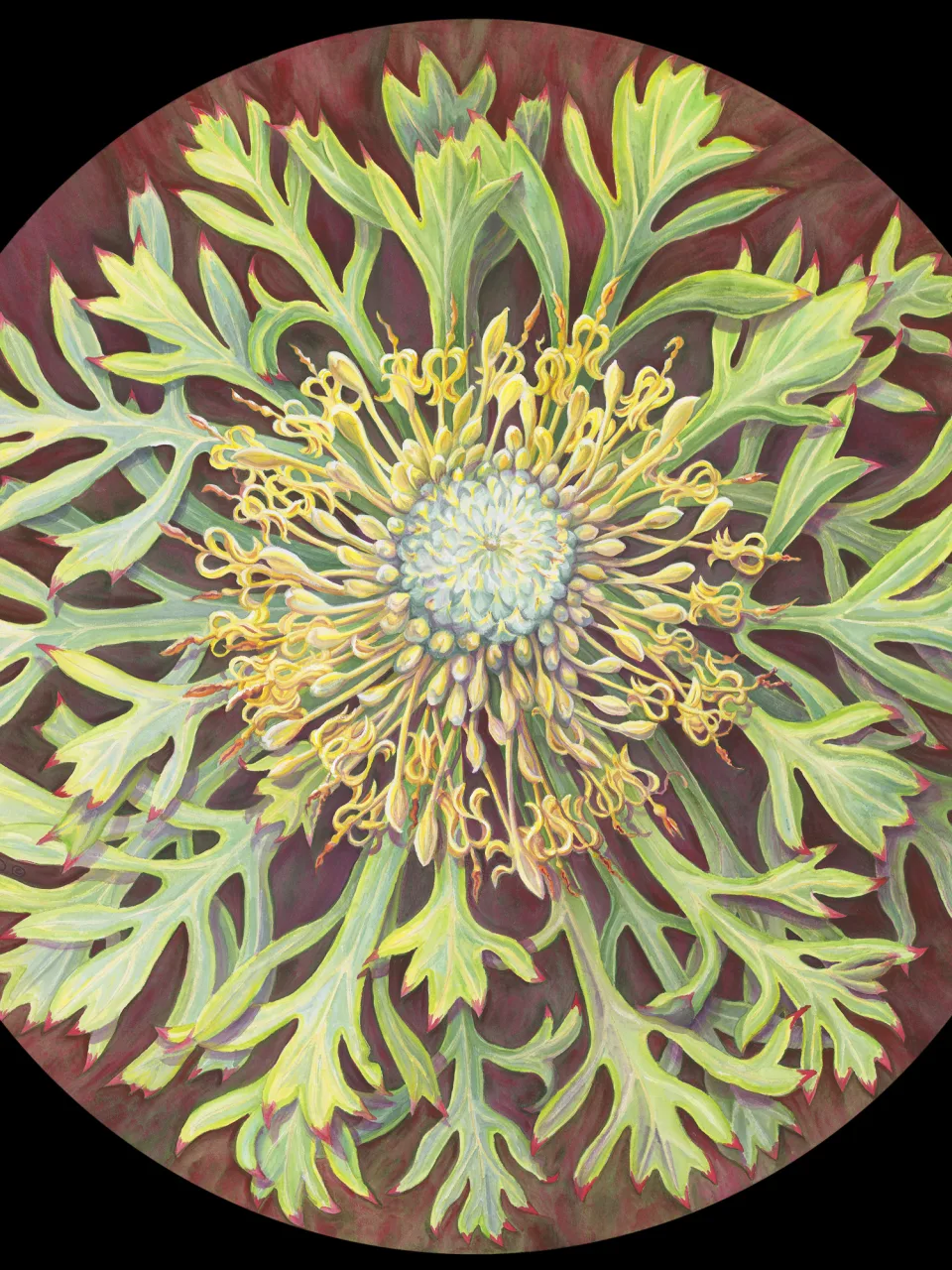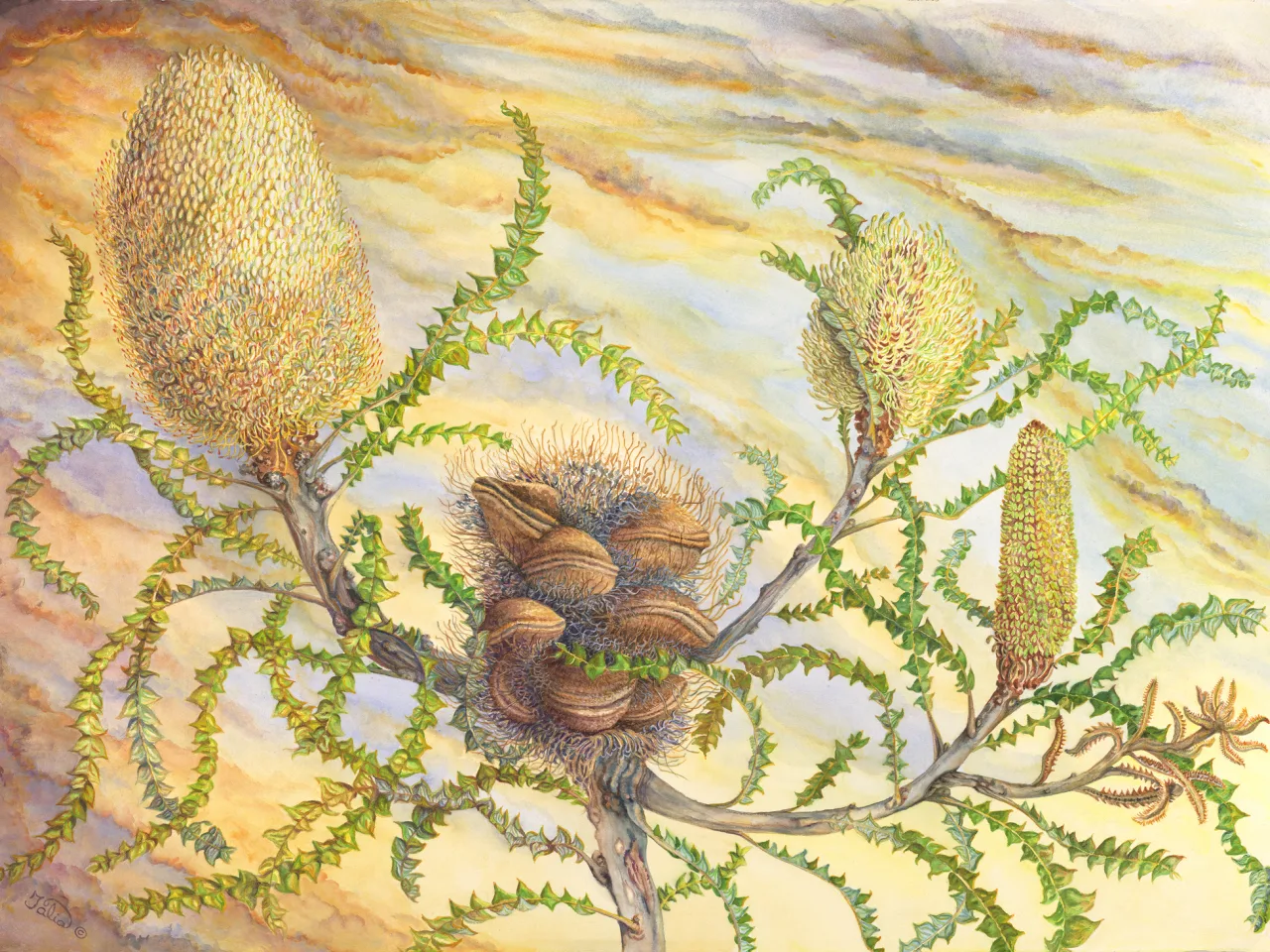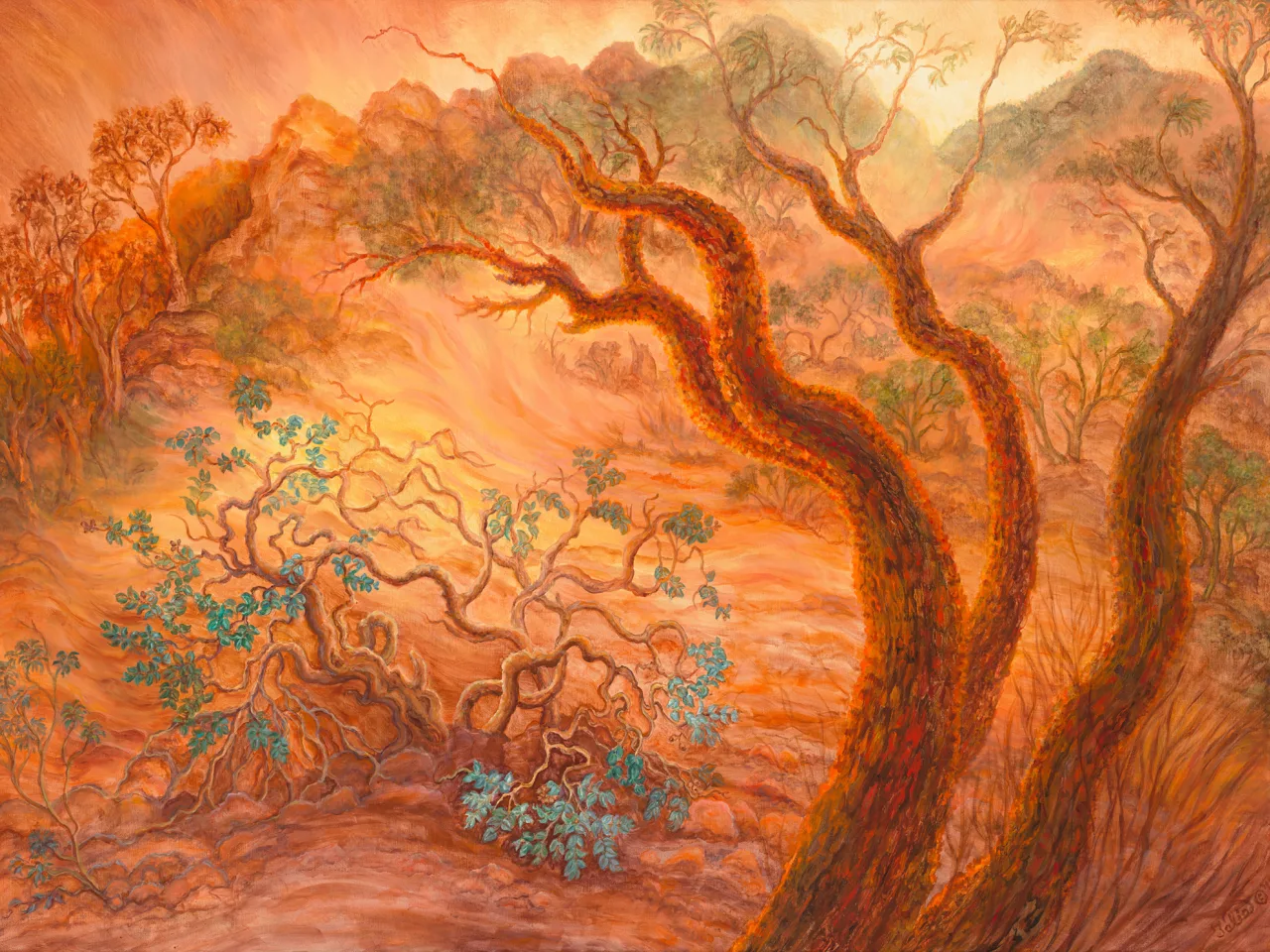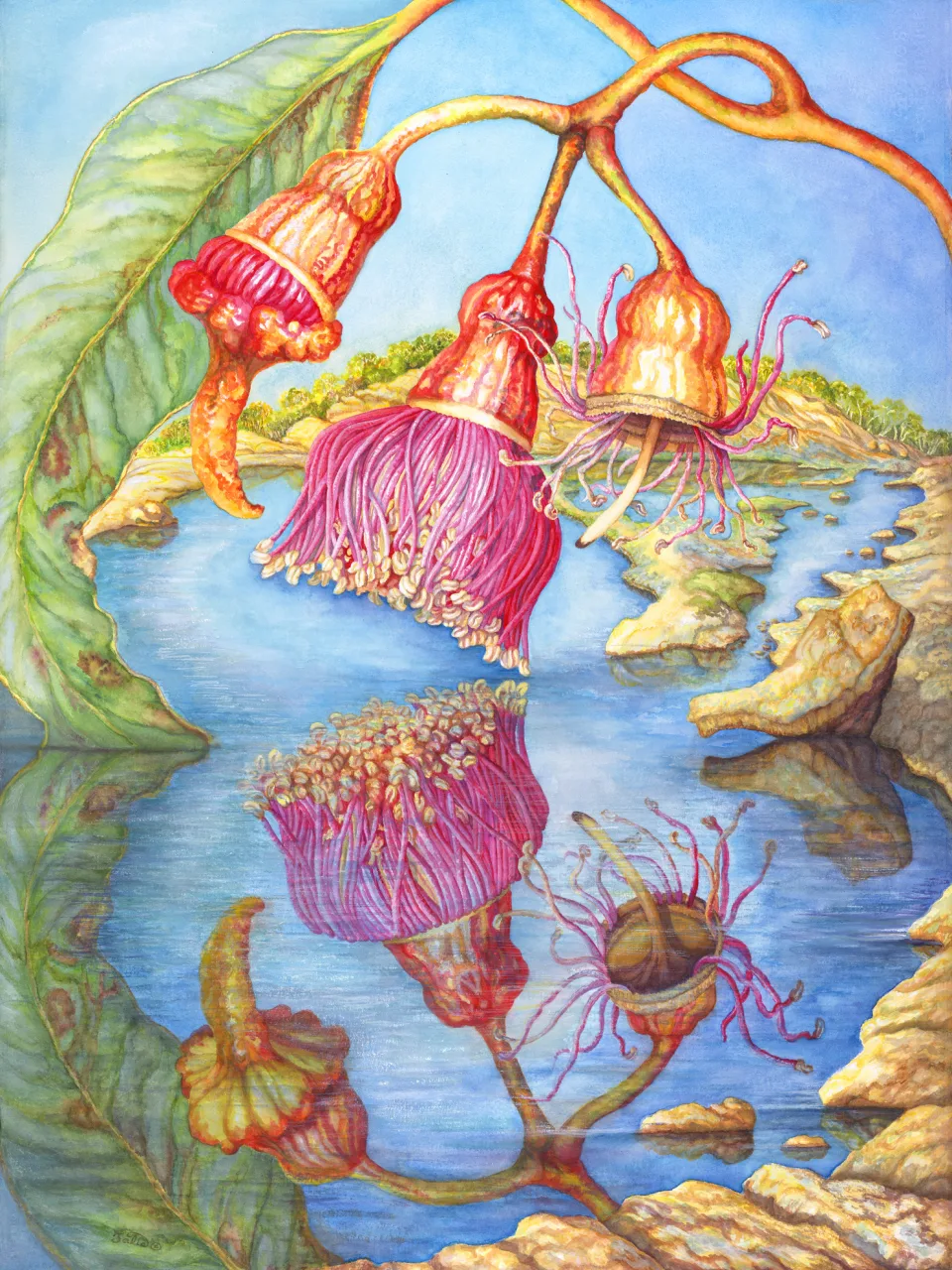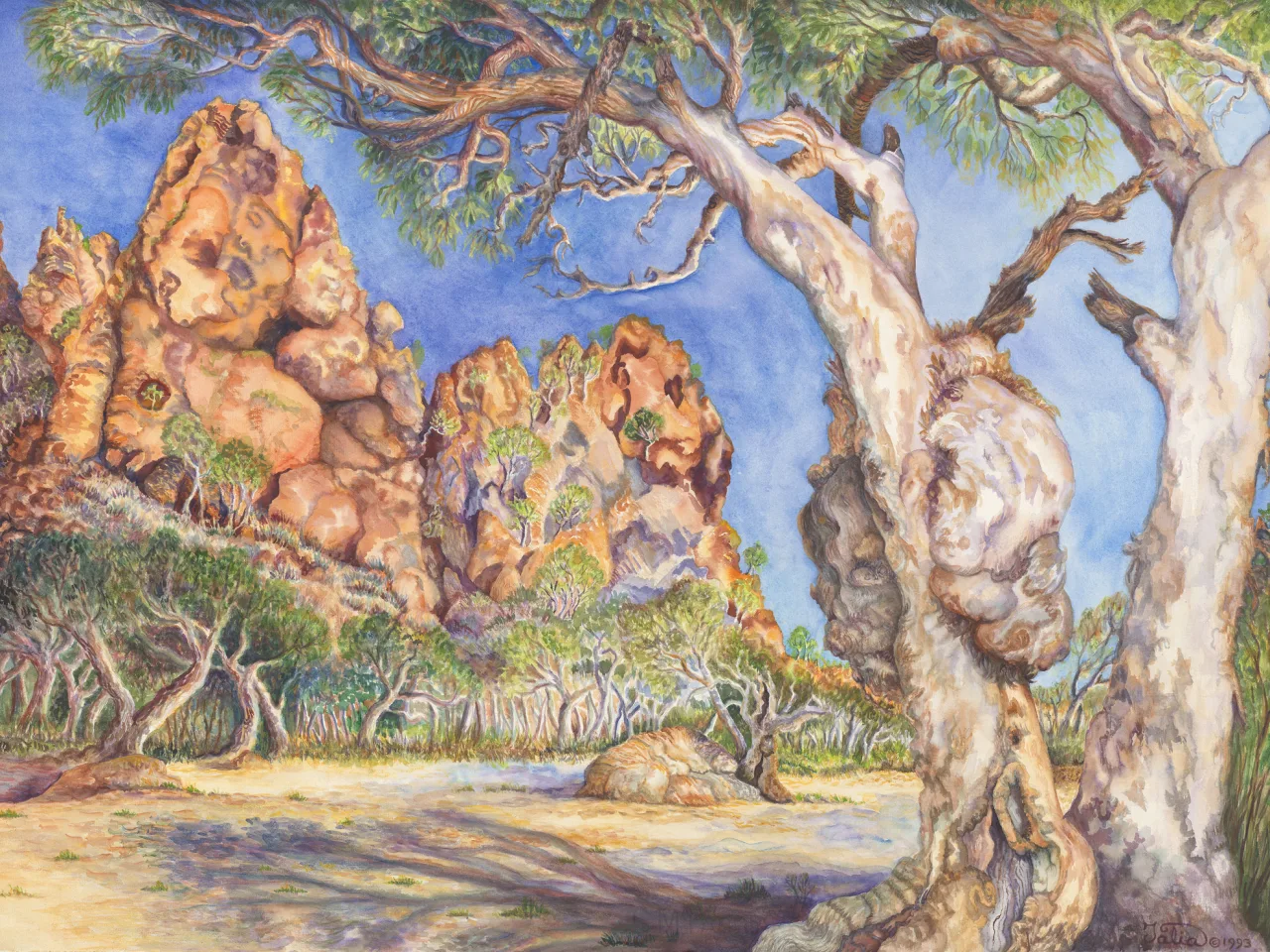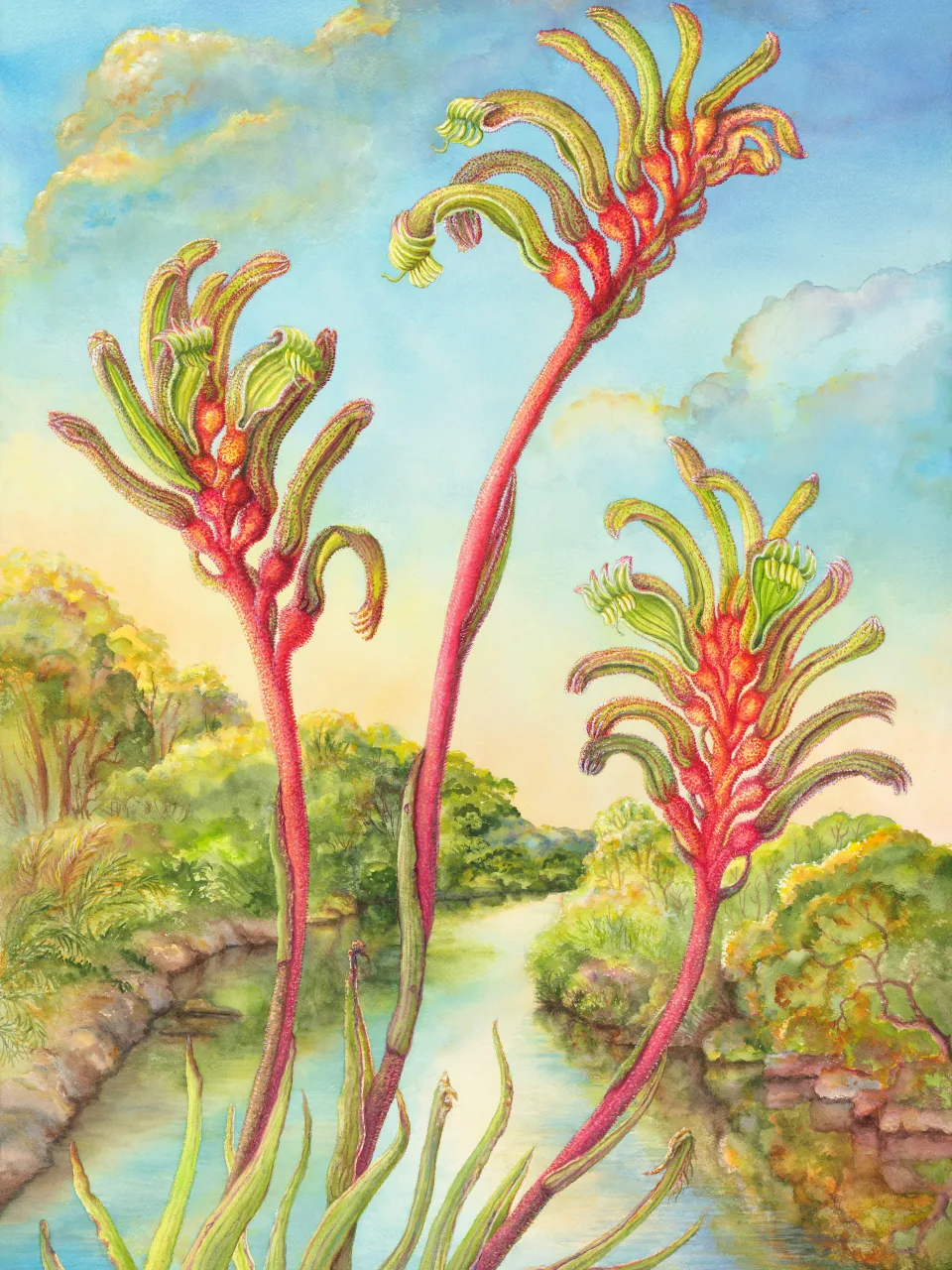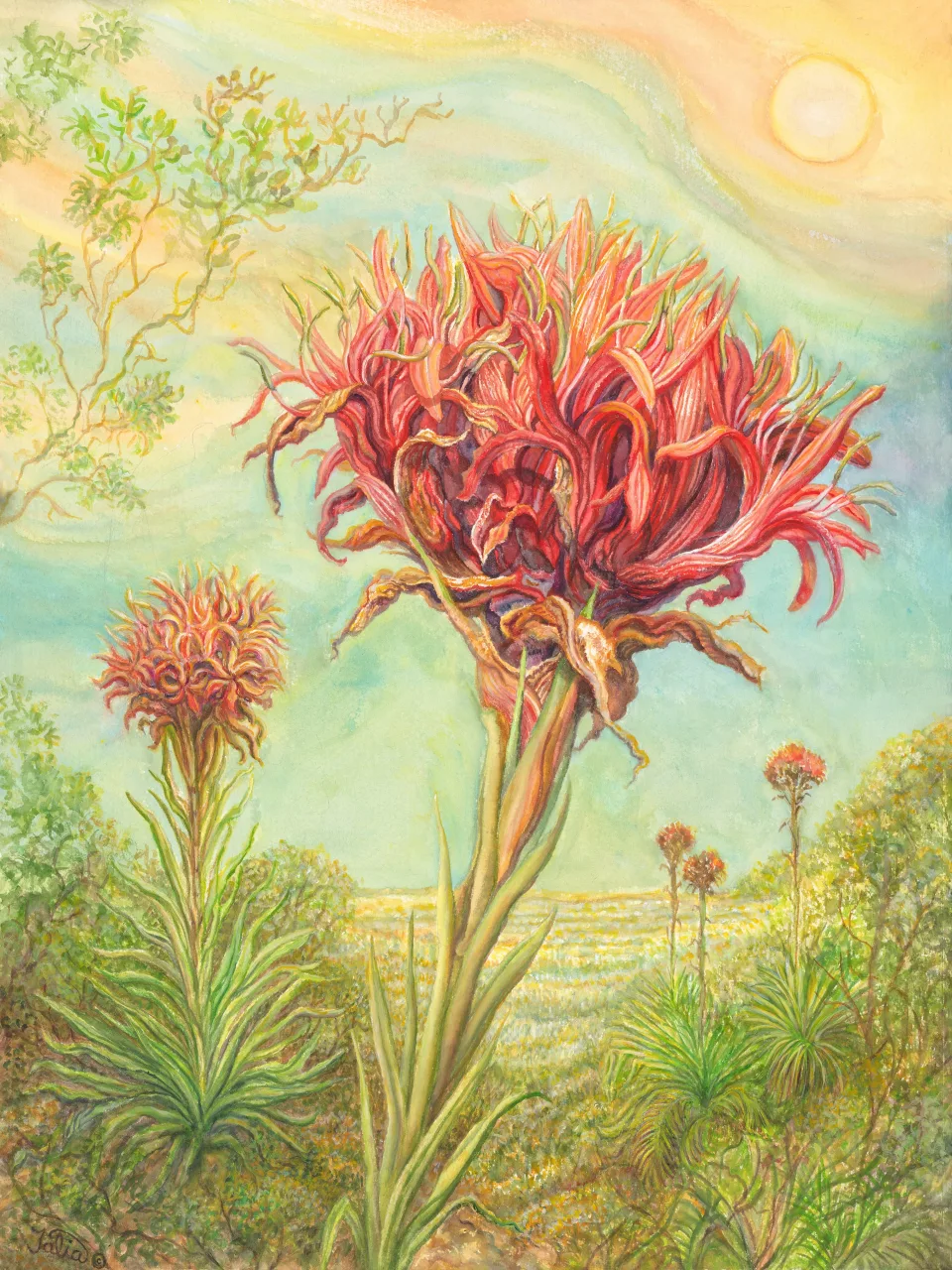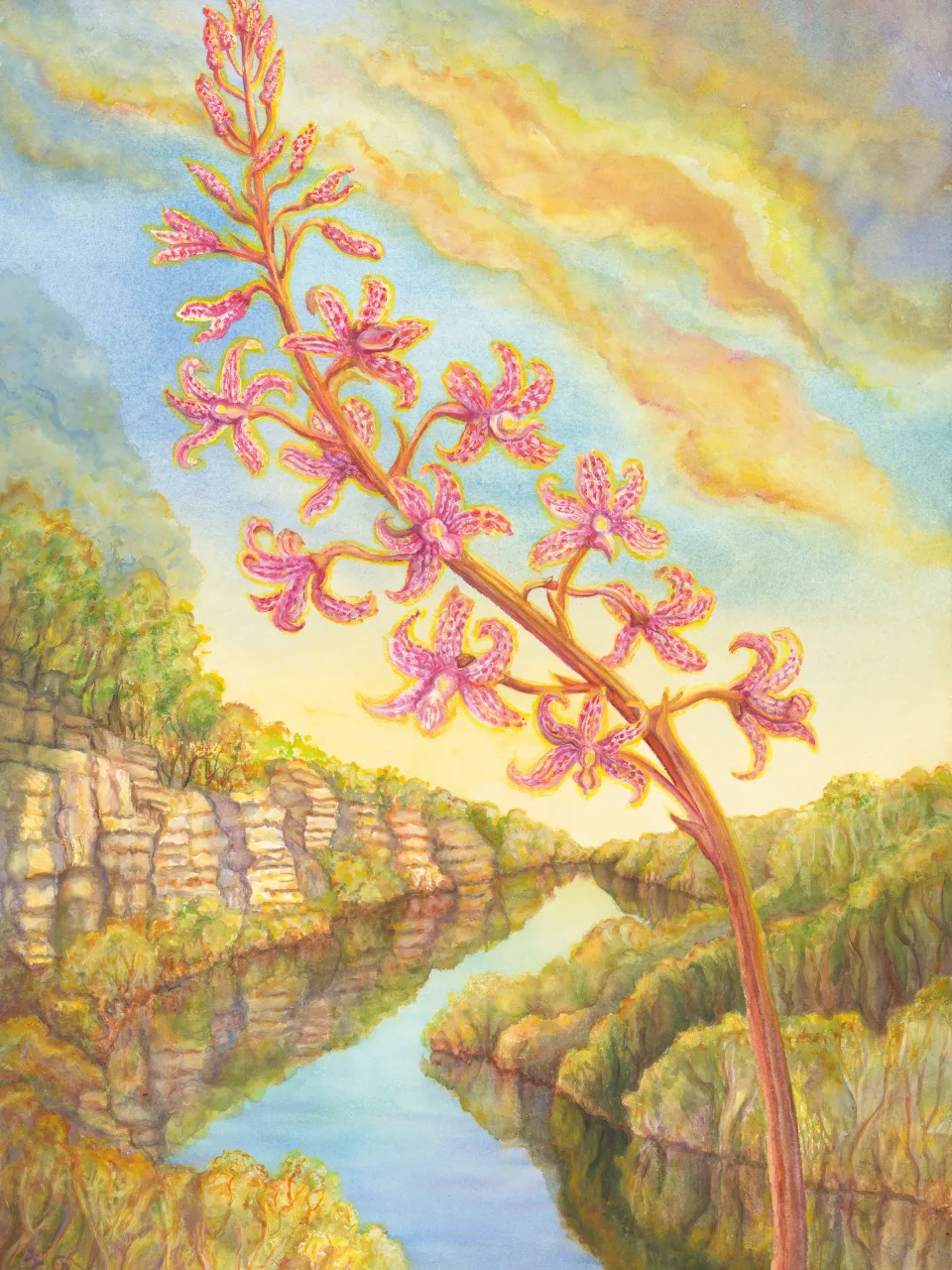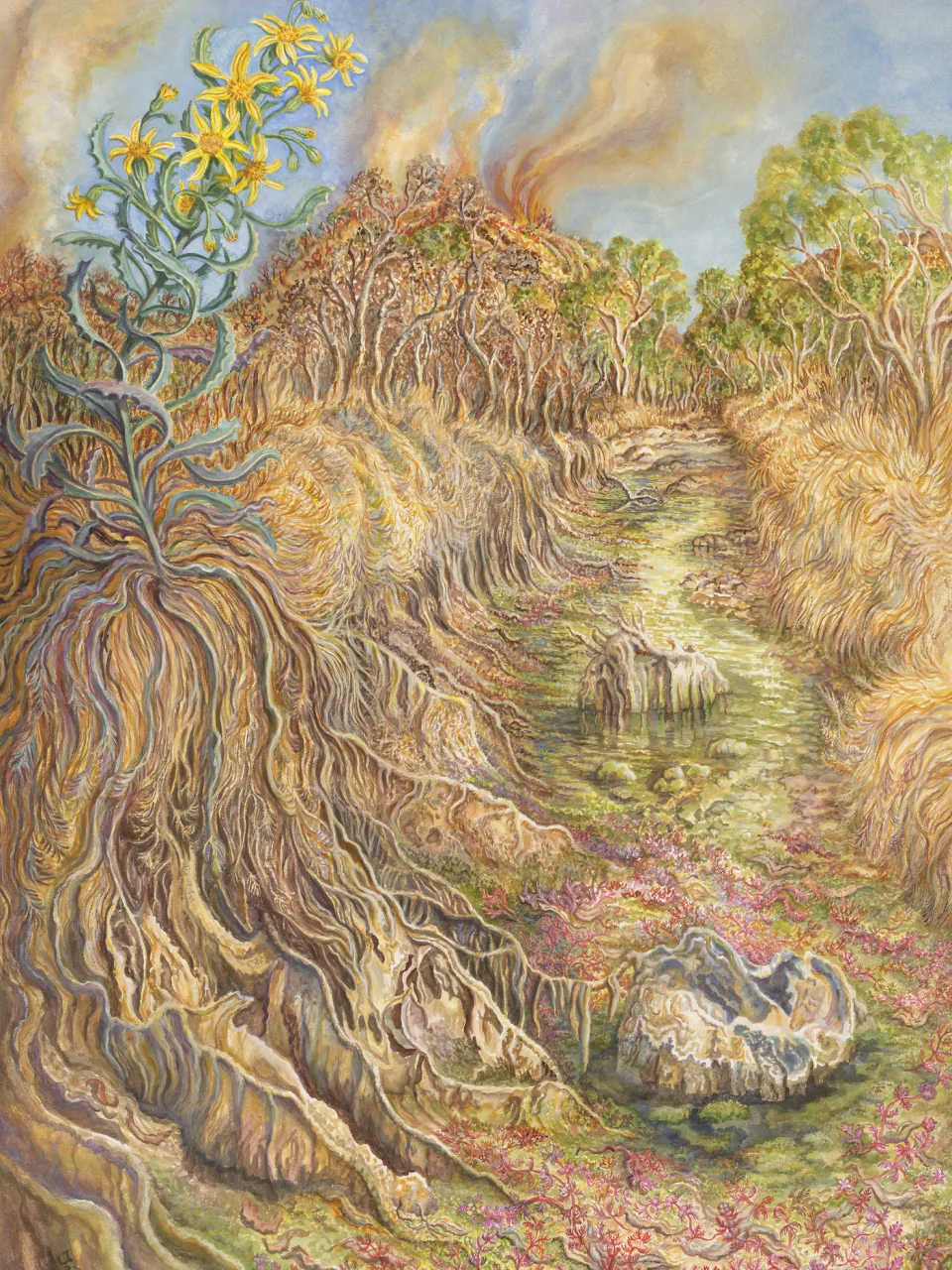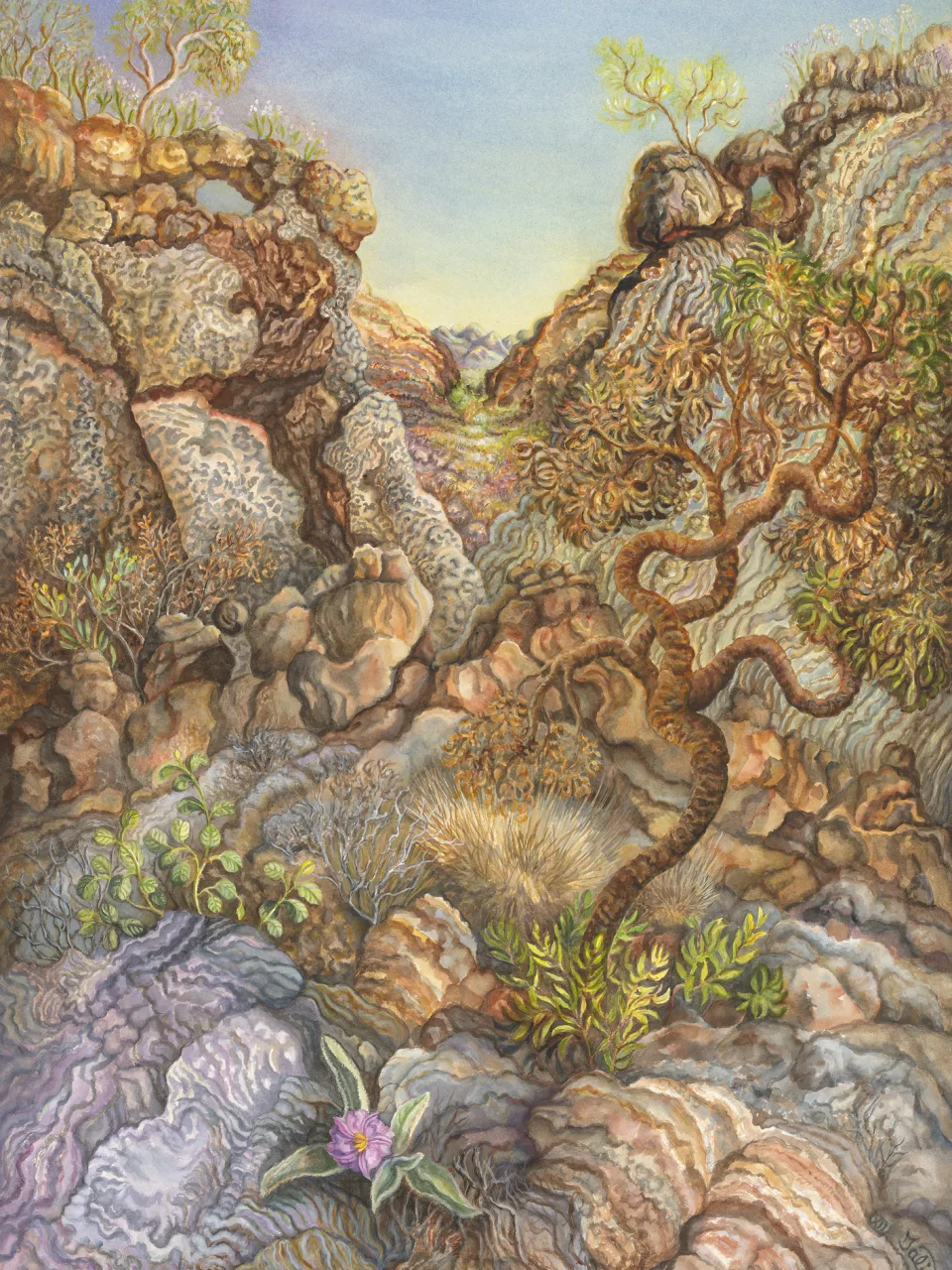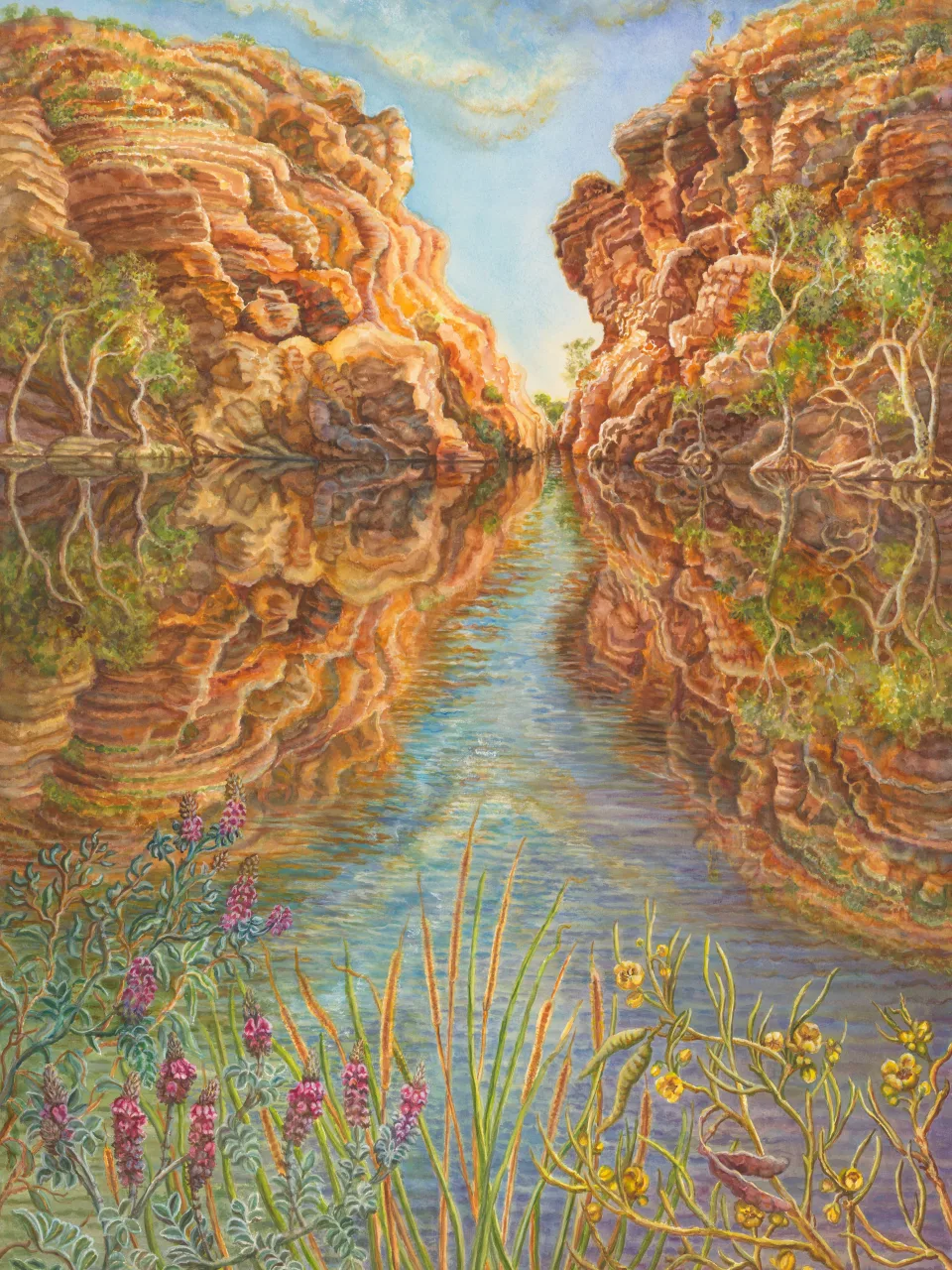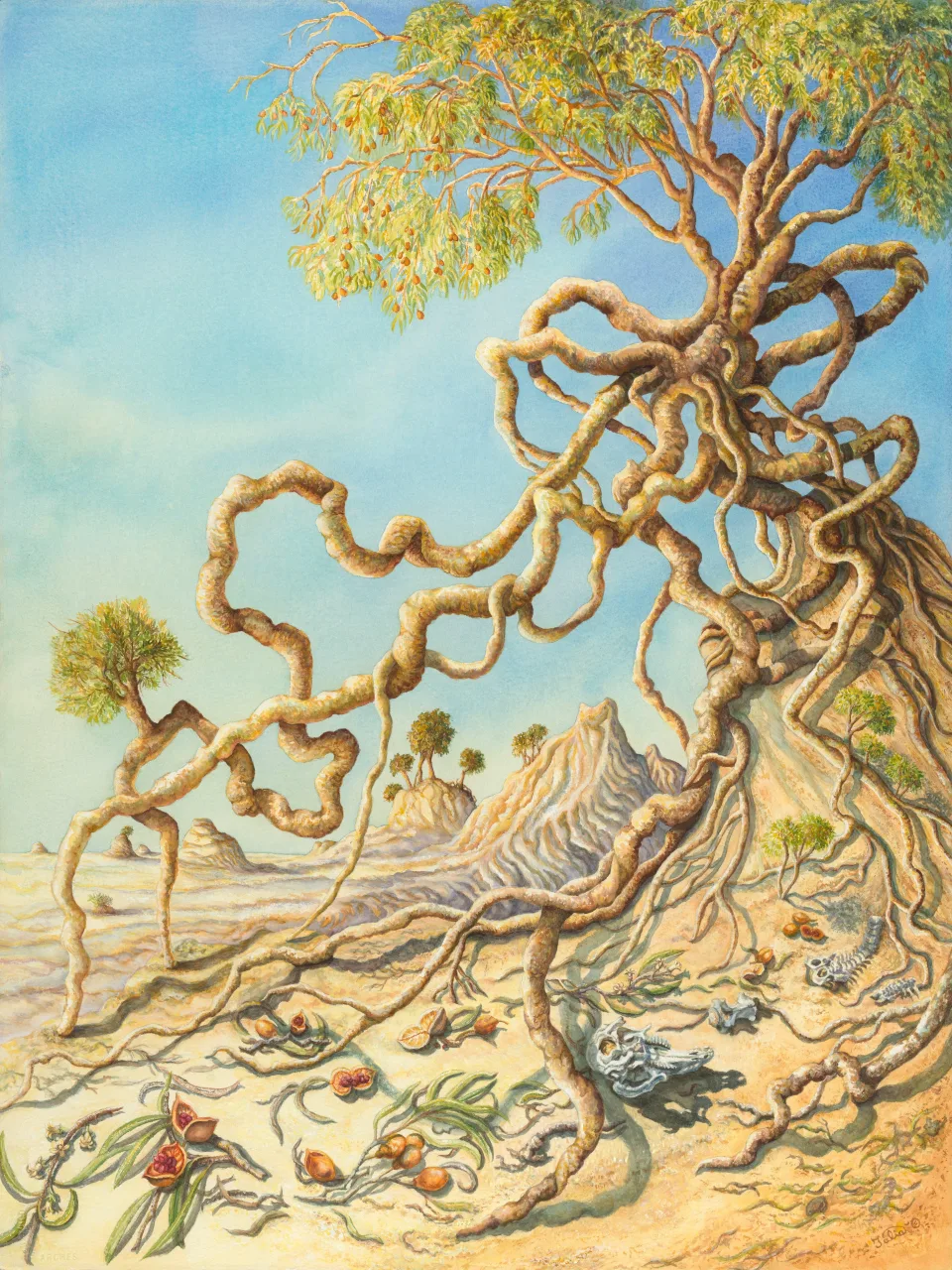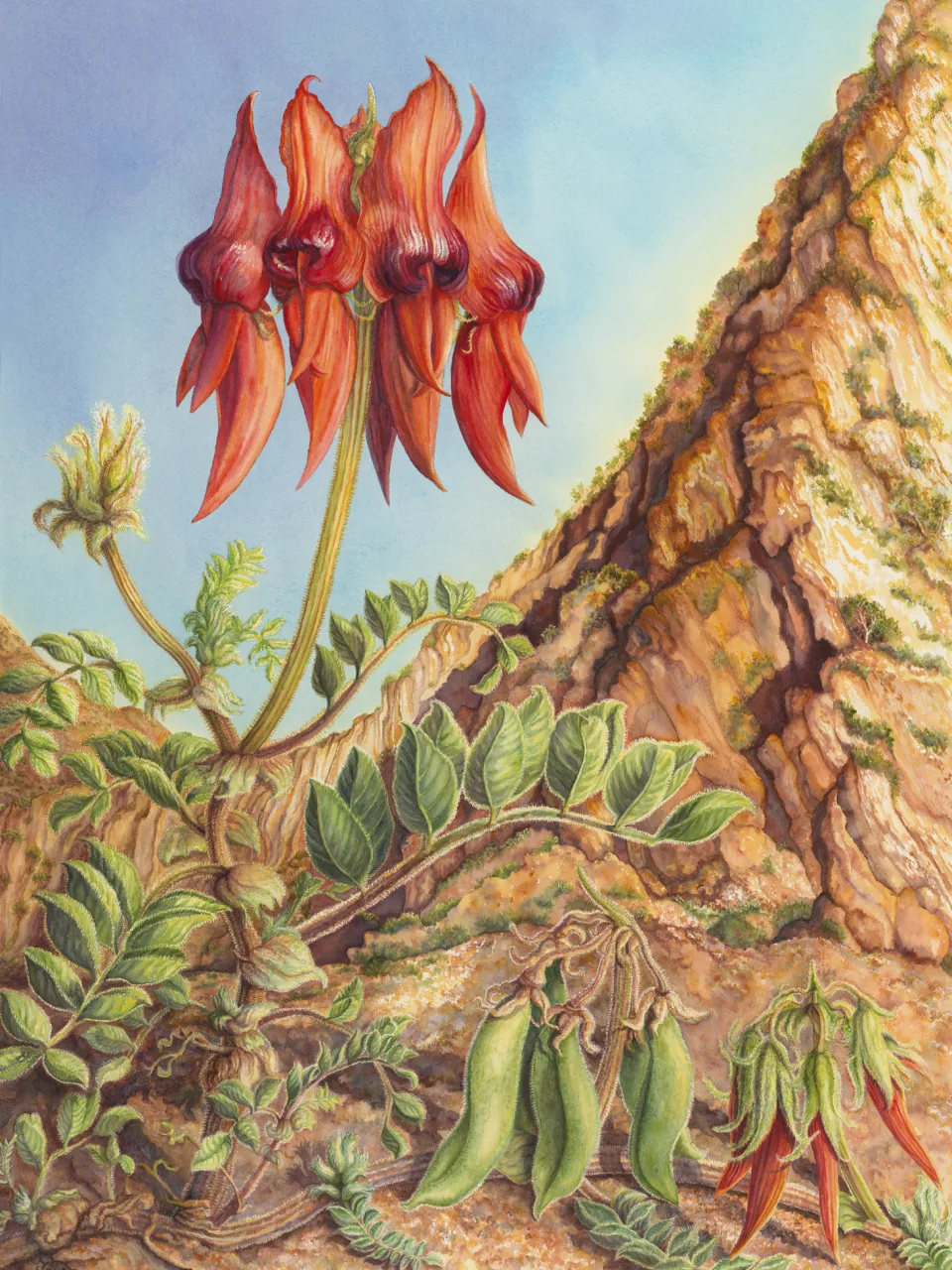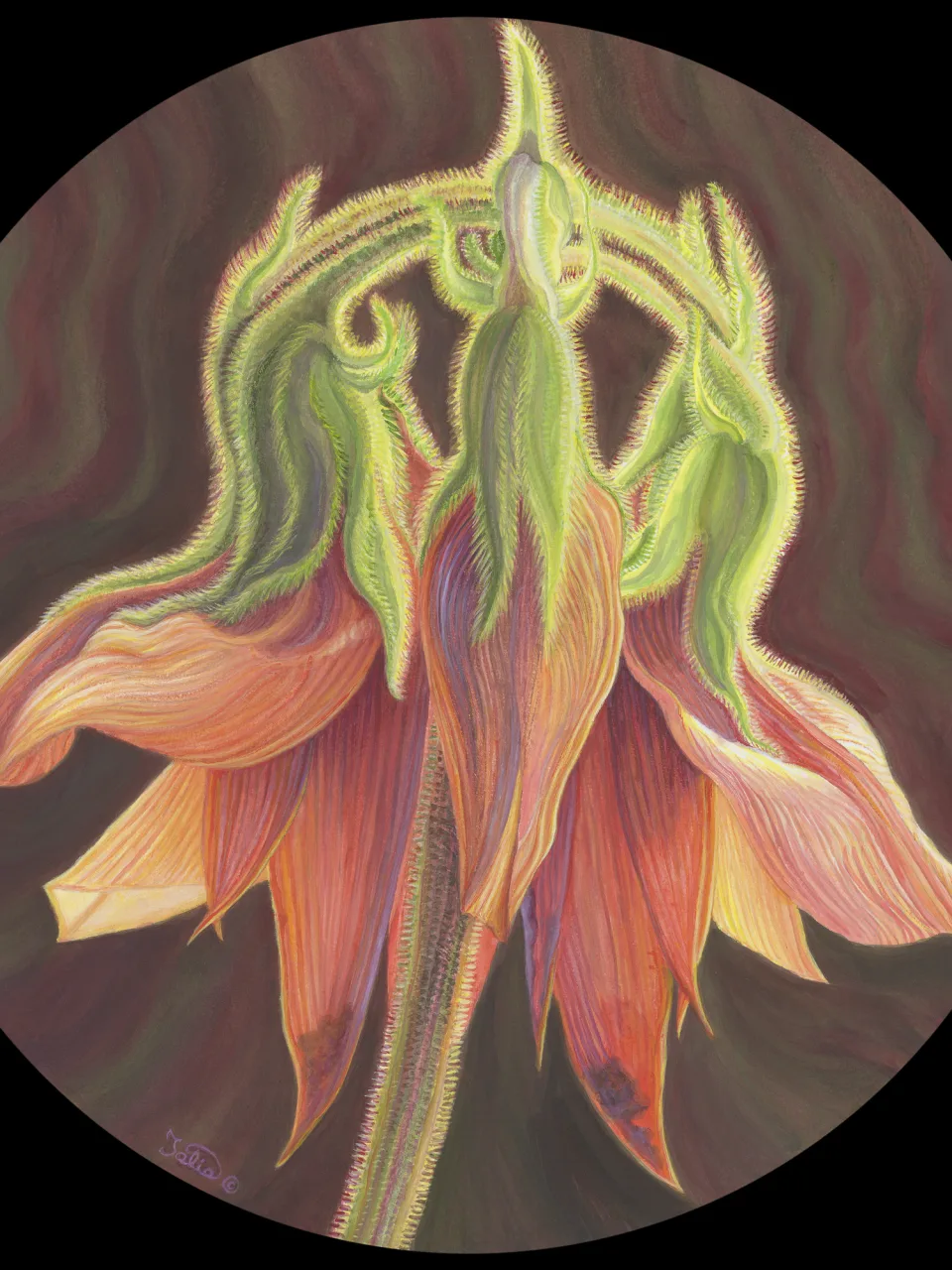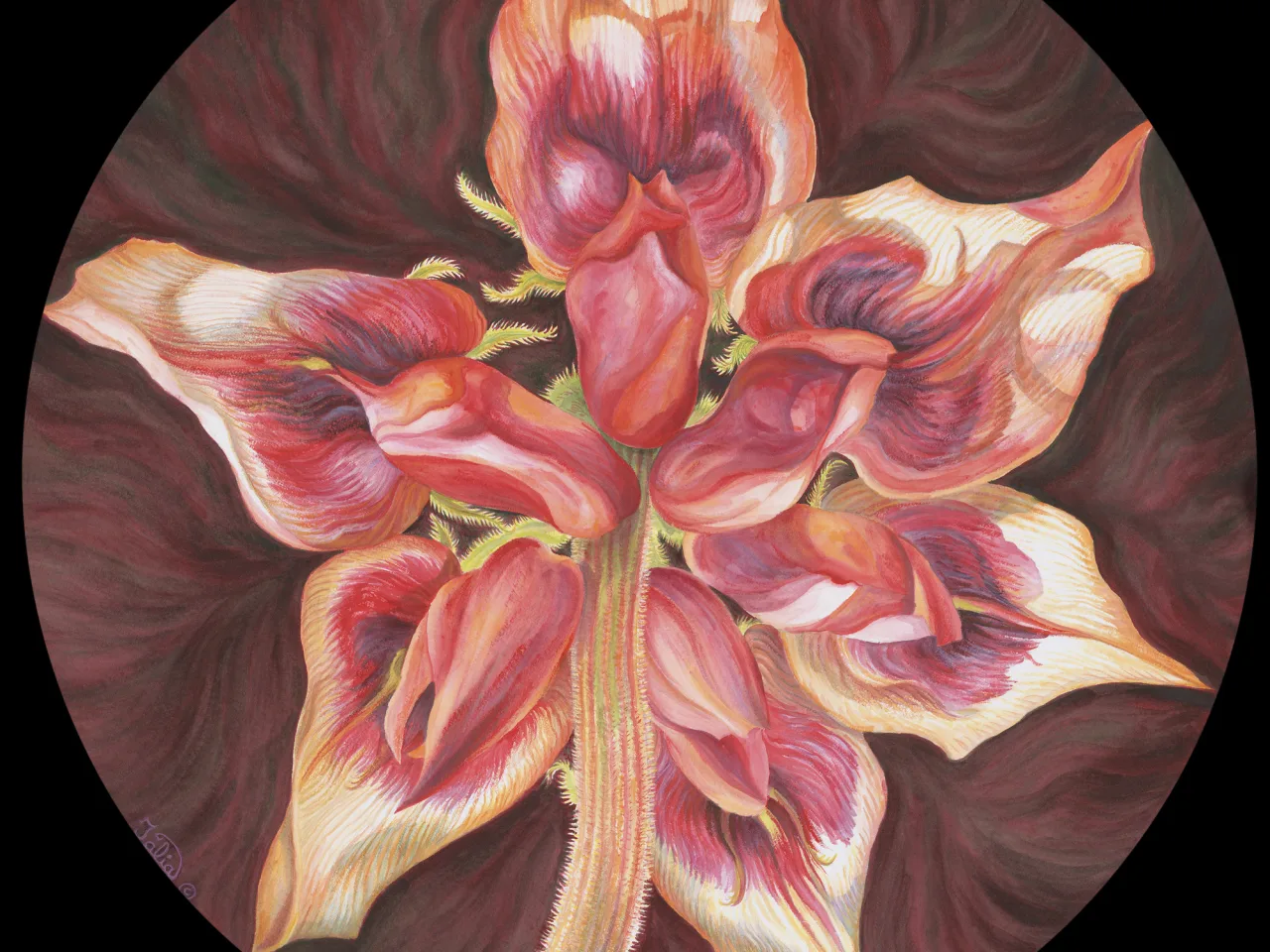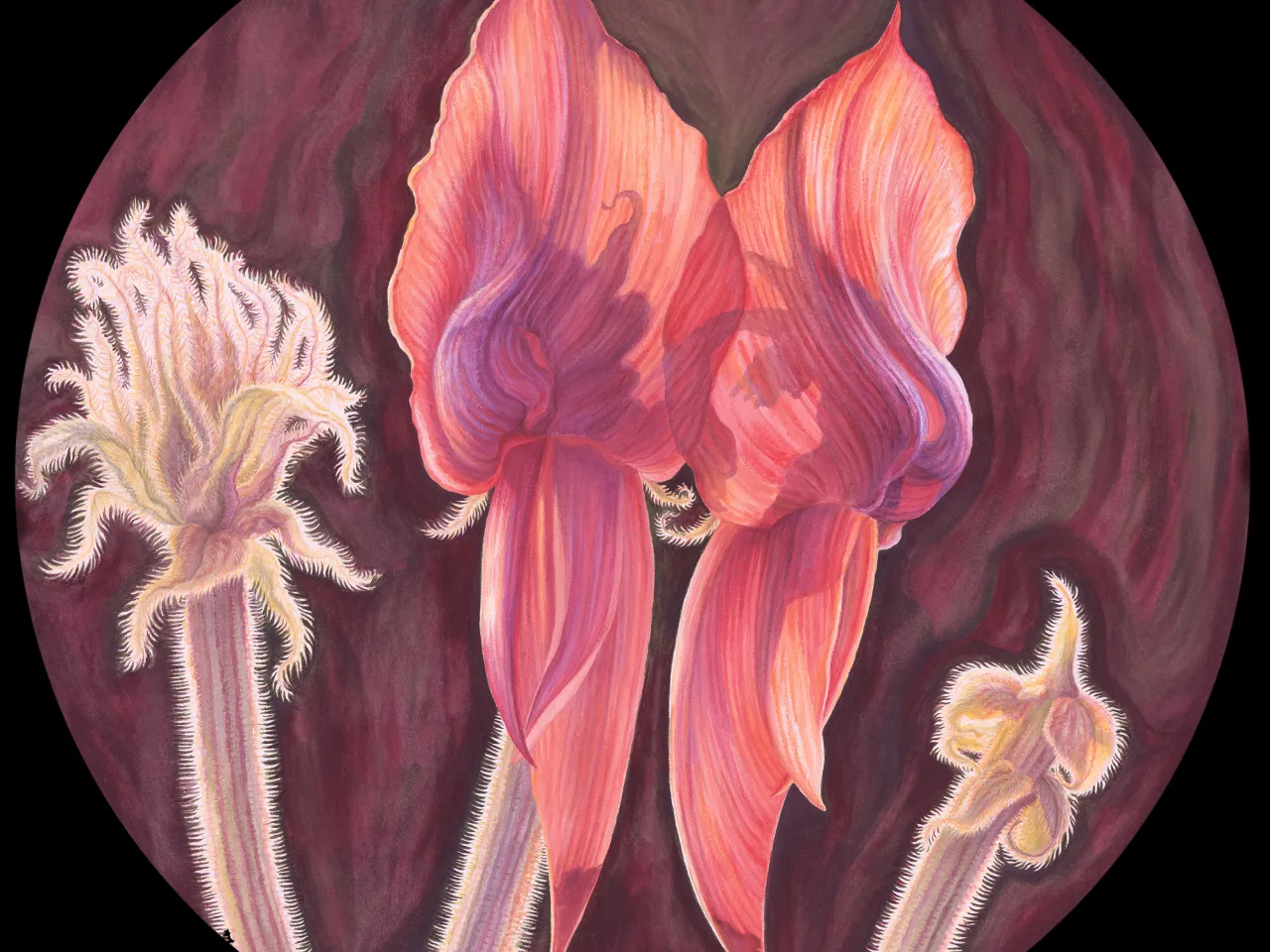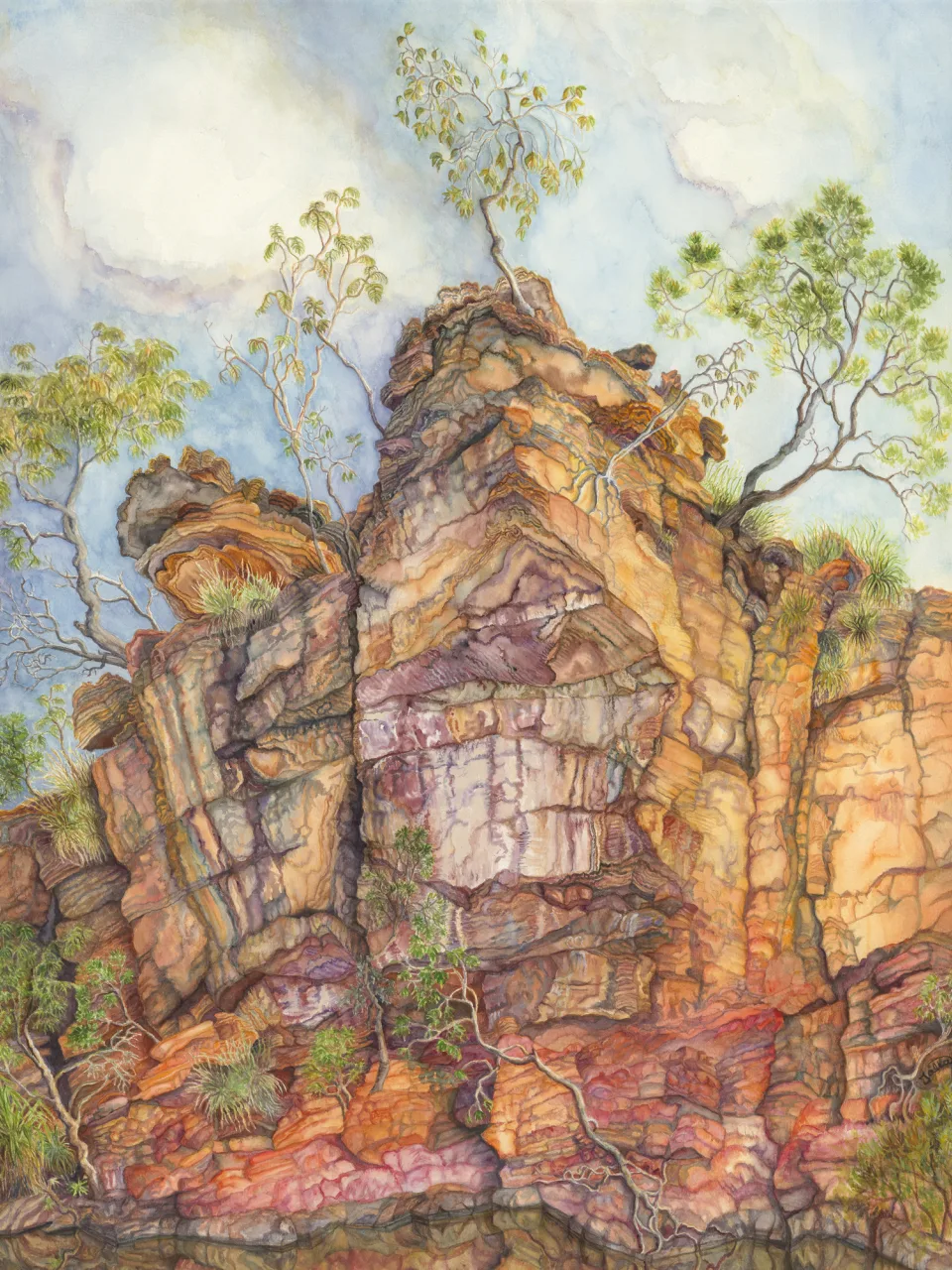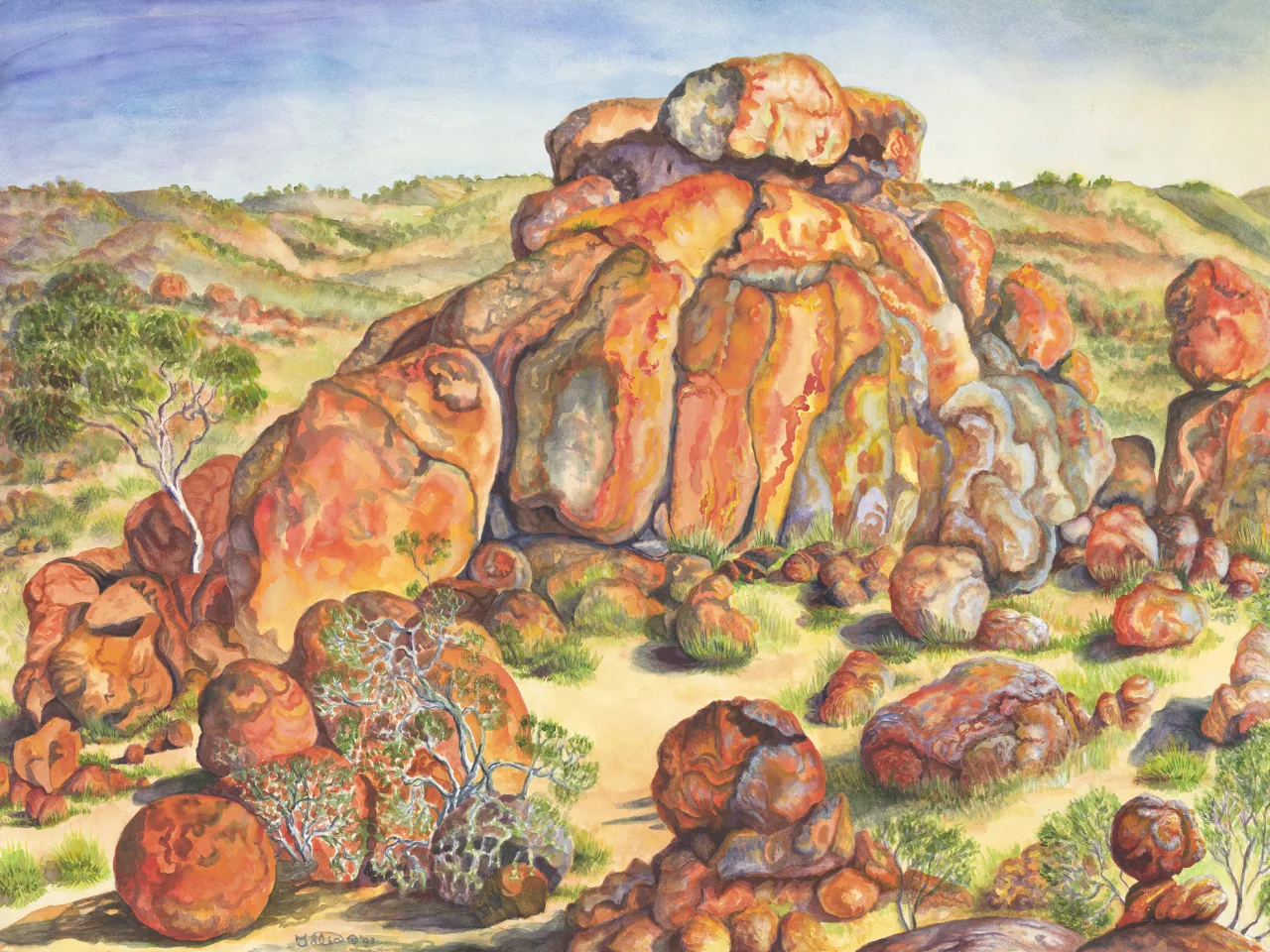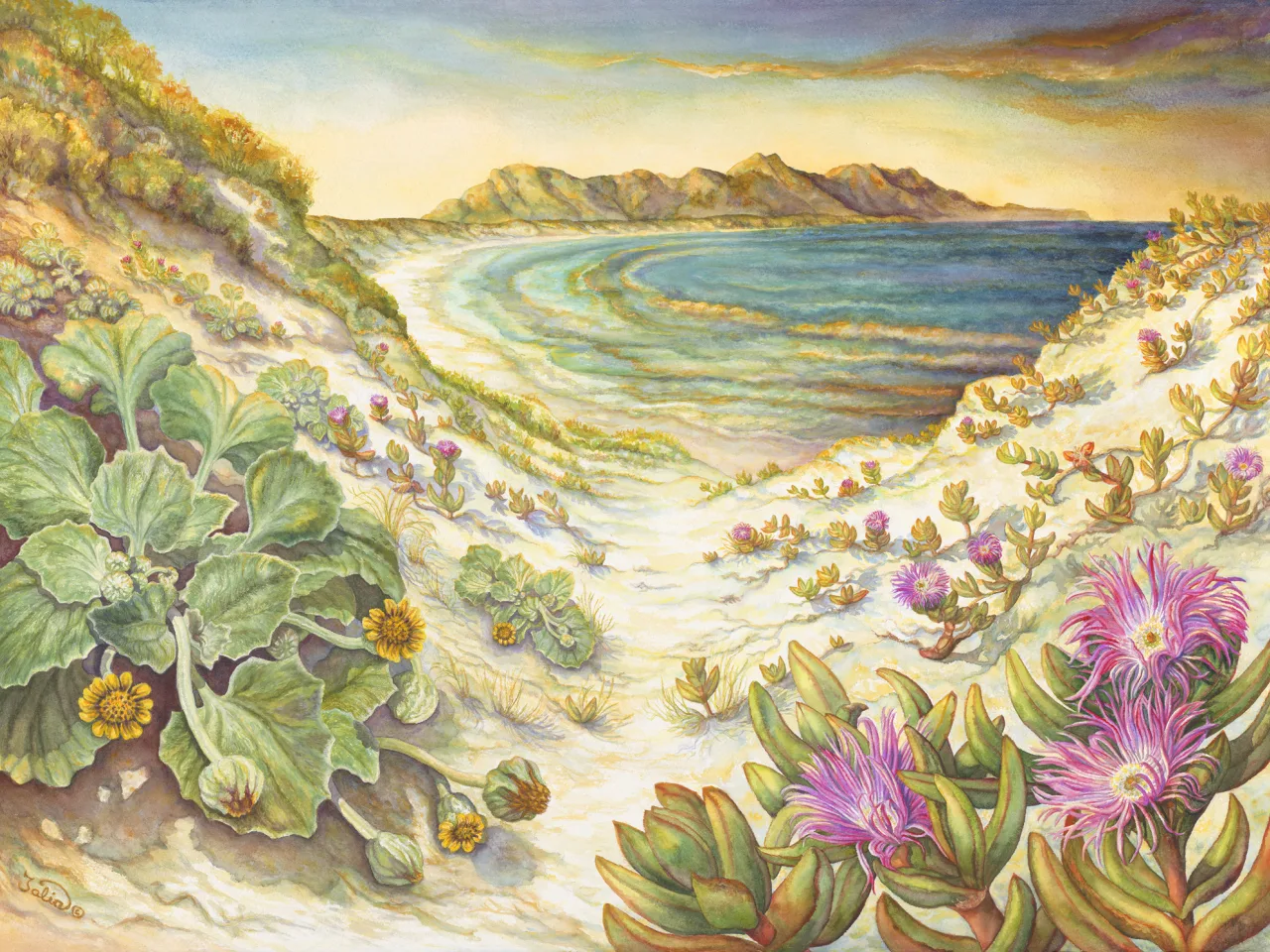Artwork 24 Memories of Gondwana—The Palms of Palm Valley
Section 19
In a Gondwanan Subtropical Rainforest of the North (Gingers and Palms)
Palm Valley, Finke Gorge National Park, NT, Northern Territory
- 1. Livistona mariae (red cabbage palms)
Artwork 24
Buy a print
Limited edition giclee archival quality print on 310 gsm Ilford cotton rag (from an original work in watermedia on watercolour board, 76 cm high x 51 cm wide)
from the artist
In 2002 I spent three memorable days exploring Finke Gorge National Park, having arranged to be taken in by four-wheel drive and picked up three days later. A campground off the winding Finke was home and headquarters for my small tent and long treks around legendary Palm Valley. In the late afternoon light, the ochre cliffs over the creek glowed orange, then red, as the Sun set. Irregular rows of cream to pale tan spinifex mounds wandered amongst the ragged red rocks, interspersed with blue-green cypress pines and white-trunked ghost gums. A perfect camp site for beauty and colour.
Ancient Palm Valley, with its special species of “red cabbage palms” found in this desert oasis quite isolated from their nearest relatives about 1,000 kms to the north, inspired many sketches, photos, and ideas for paintings. Two have become part of this series.
Livistona mariae grow only here, on a branch of the arid, dusty Finke River in the Northern Territory, and are relicts from the “Palmae Province”. This worldwide tropical distribution of early flowering plants from the rift valley of West Gondwana in the Early Cretaceous enabled some ancestral palms to reach Australia, probably via India, 100 mya, before India moved away and a migration route for plants no longer existed (see also Section 08 “Cycads of Central Australia”). Other palms could have entered Australia via periodic land connections with South-East Asia.
There are about 2,000 species of palms, and the family (Arecaceae) is the only one in the order Arecales. The palms are most closely related to the gingers and grasses (based on chemical and molecular studies) and they probably emerged at earliest about 140–125 mya, before spreading worldwide throughout the tropics. However, they are not related to the pandans or “screw palms” (featured in Section 20), as previously thought (Kress & Sherwood, 2009, p. 119). Some members of the palm family, such as the vicious, thorned climbing palms known as lawyer canes or wait-a-whiles (Calamus sp.) may have changed little from their very early ancestors (White, 1986, pp. 182–183). Some palms have become very widely distributed, such as the coconut palms (Cocos nucifera). While the hard-husked fruits can survive long sea voyages, they have also been widely distributed by sea voyagers, so the extent of early natural distribution is uncertain.




